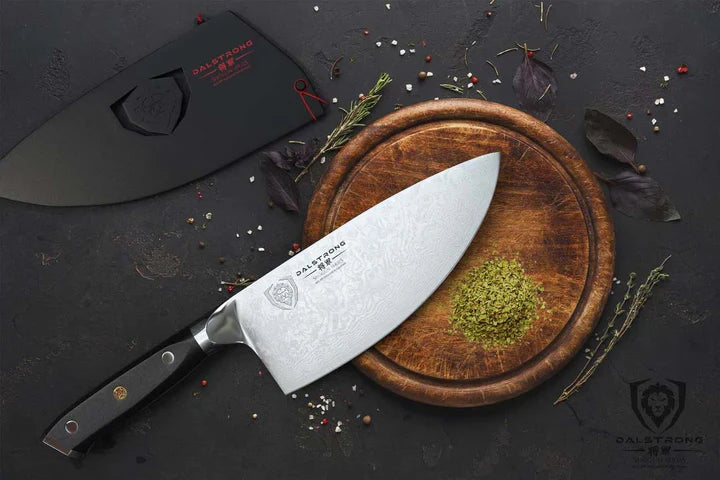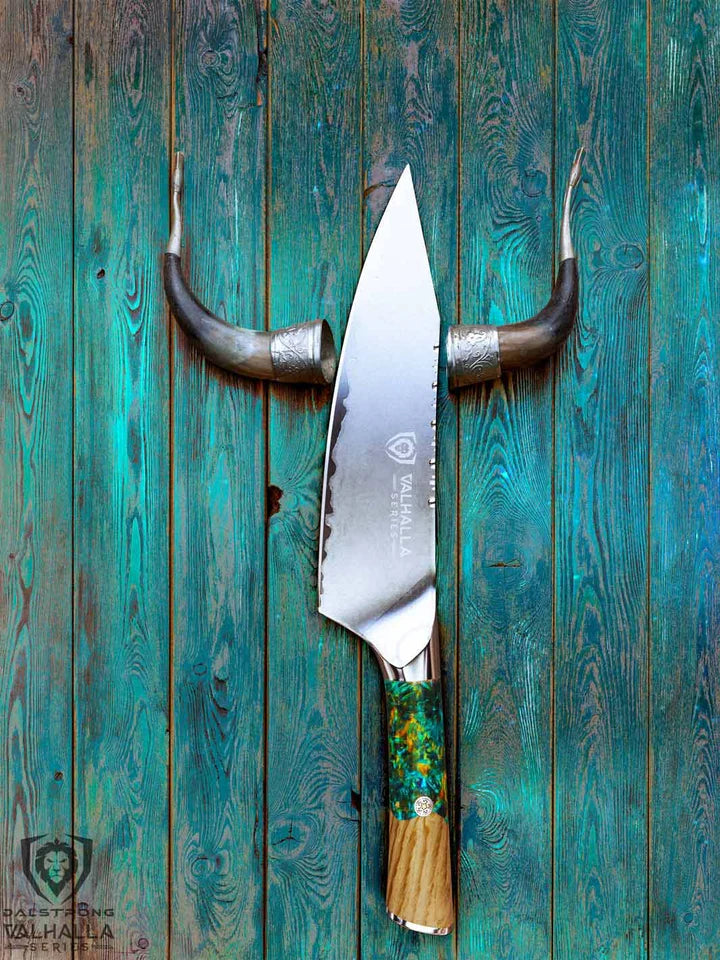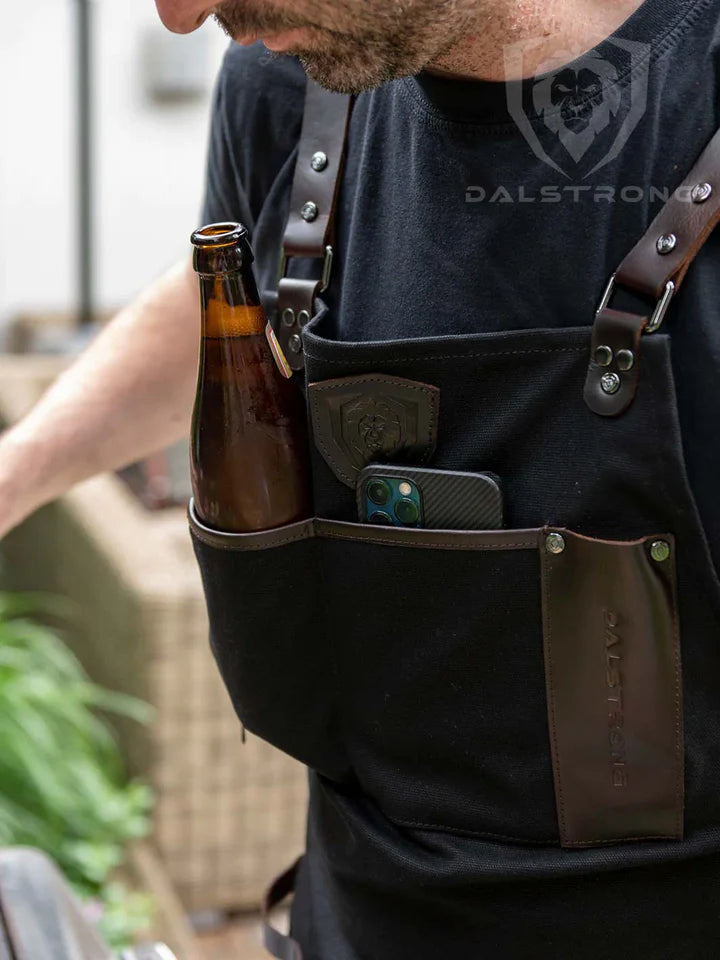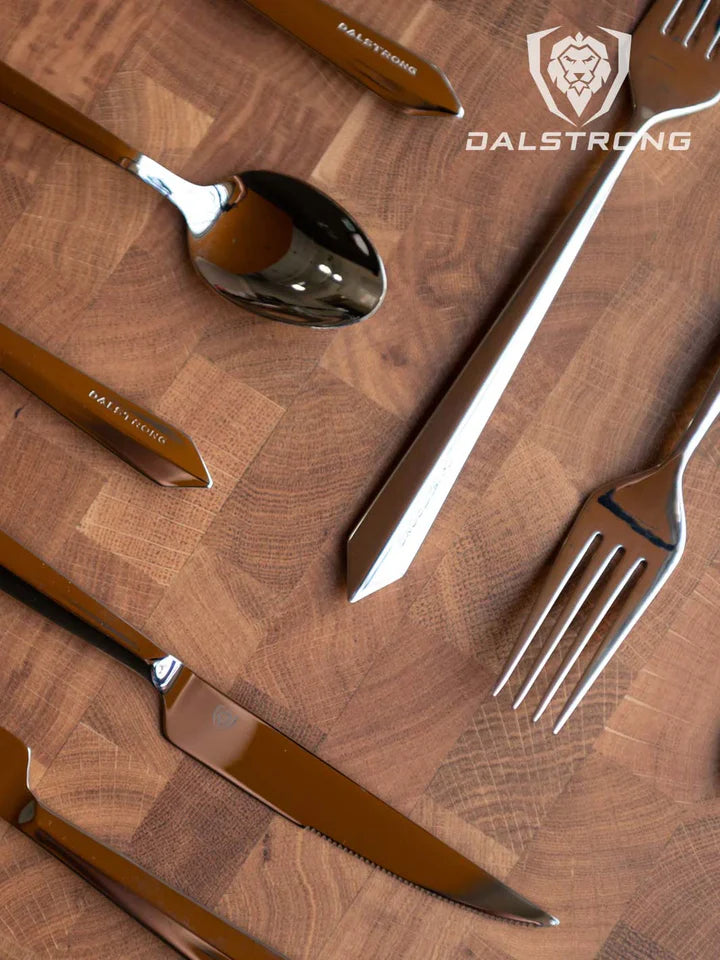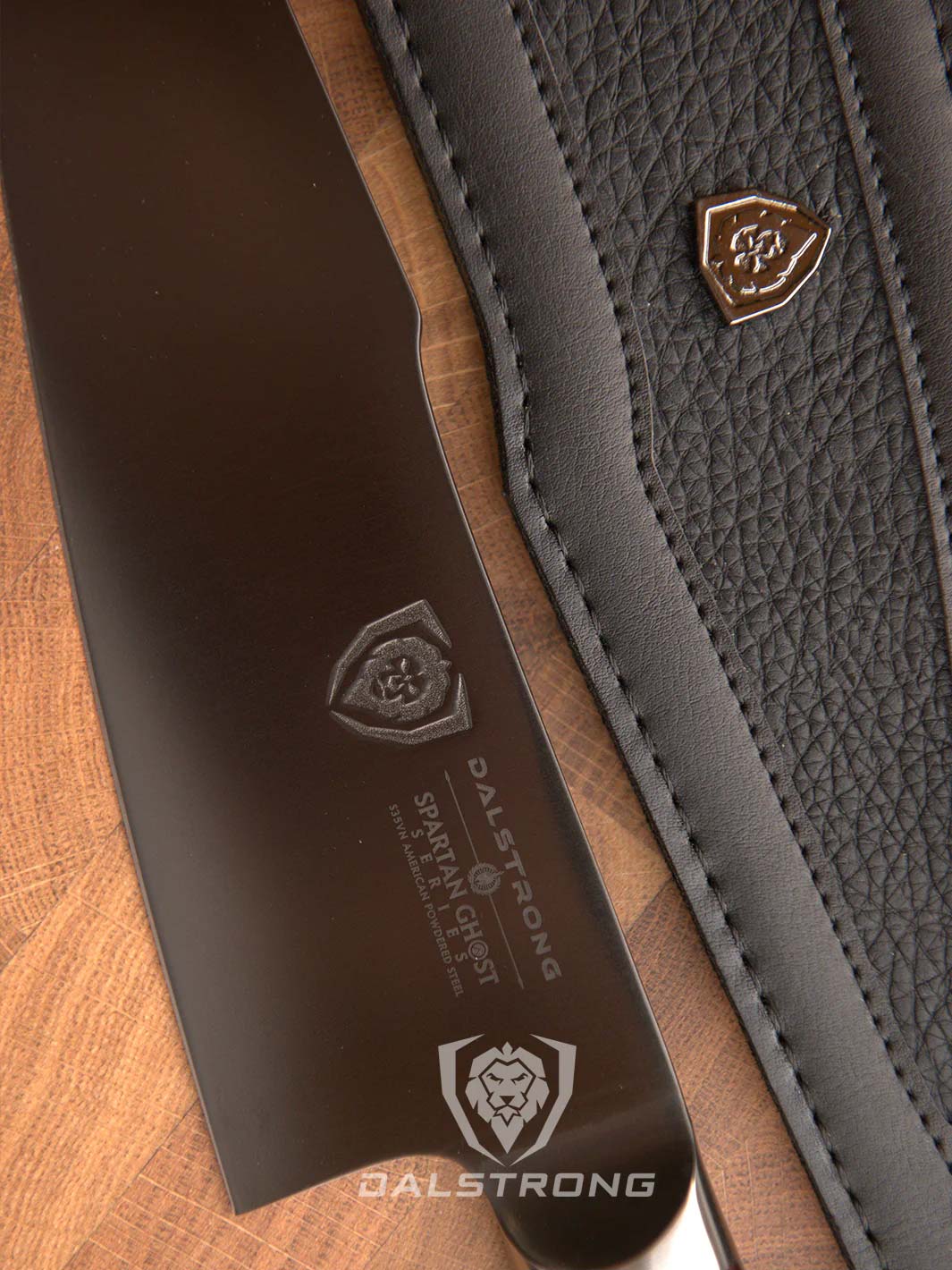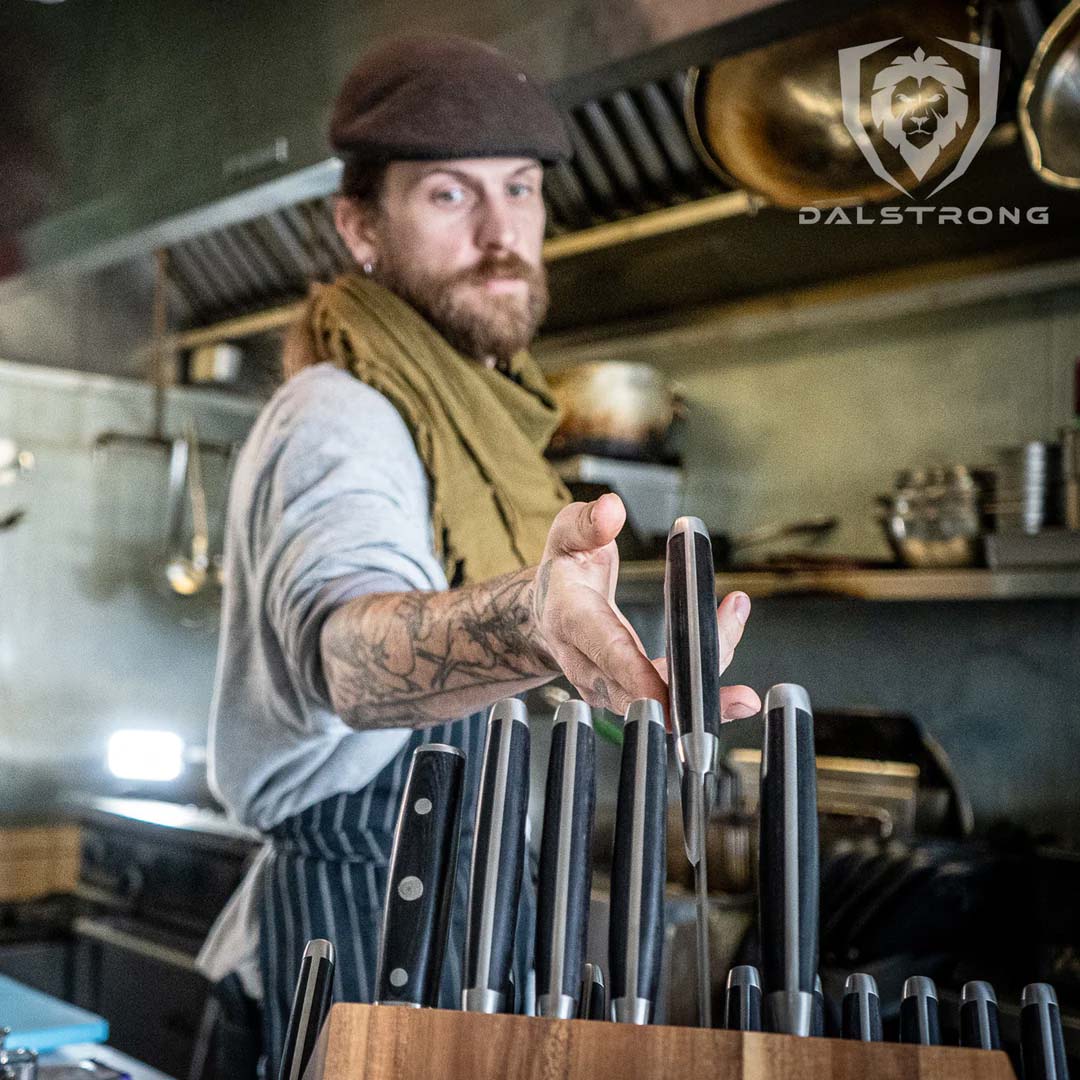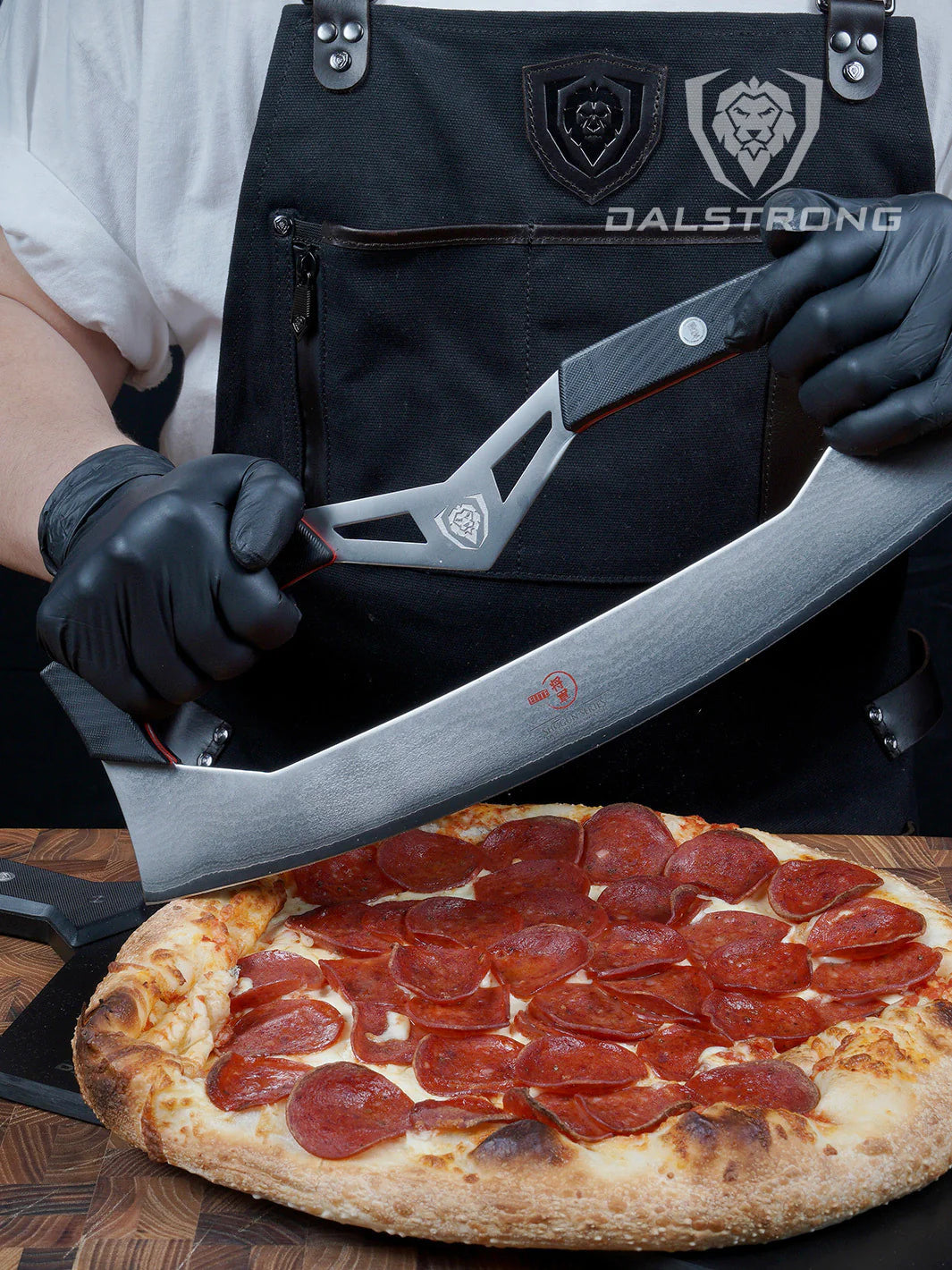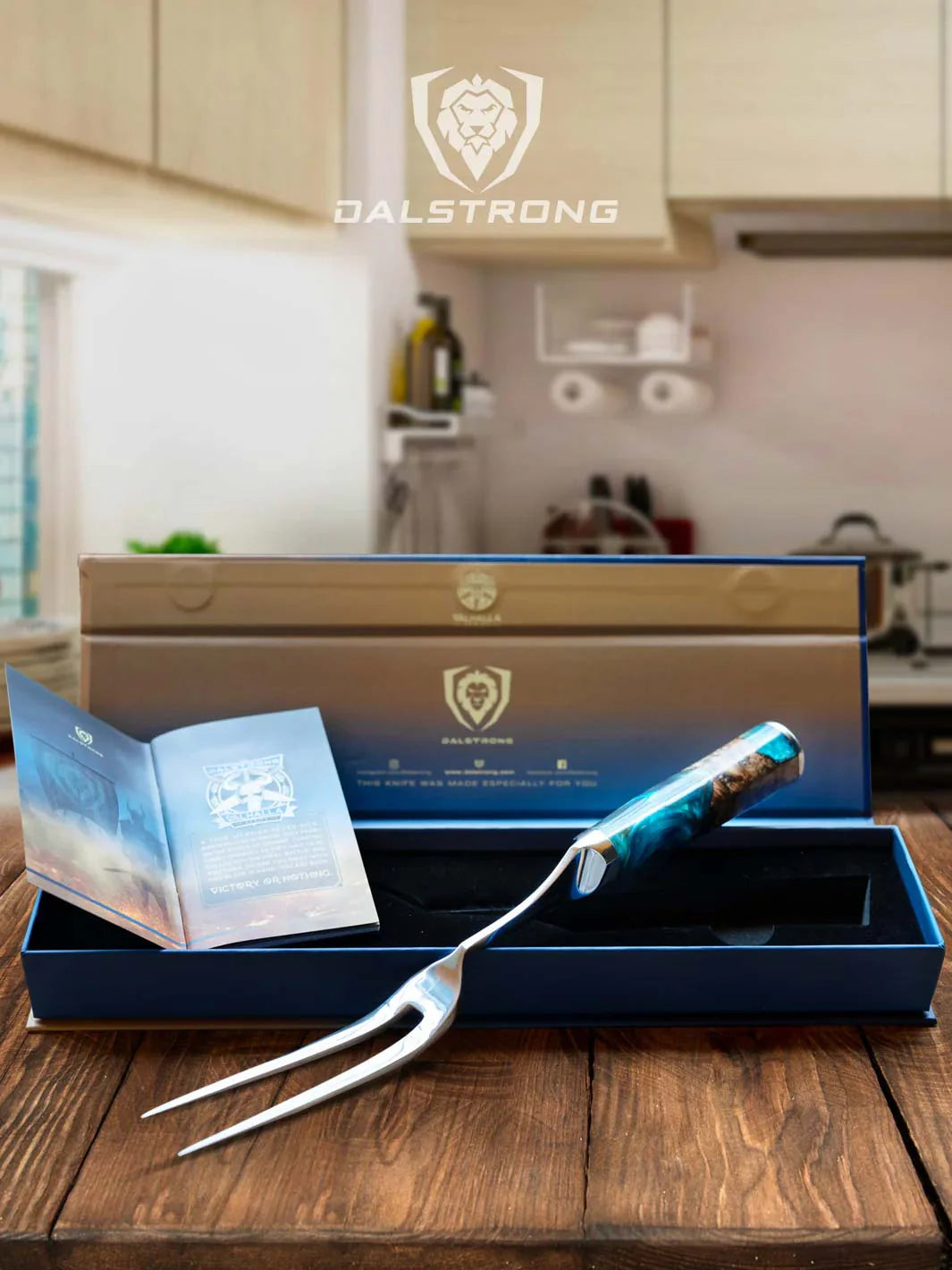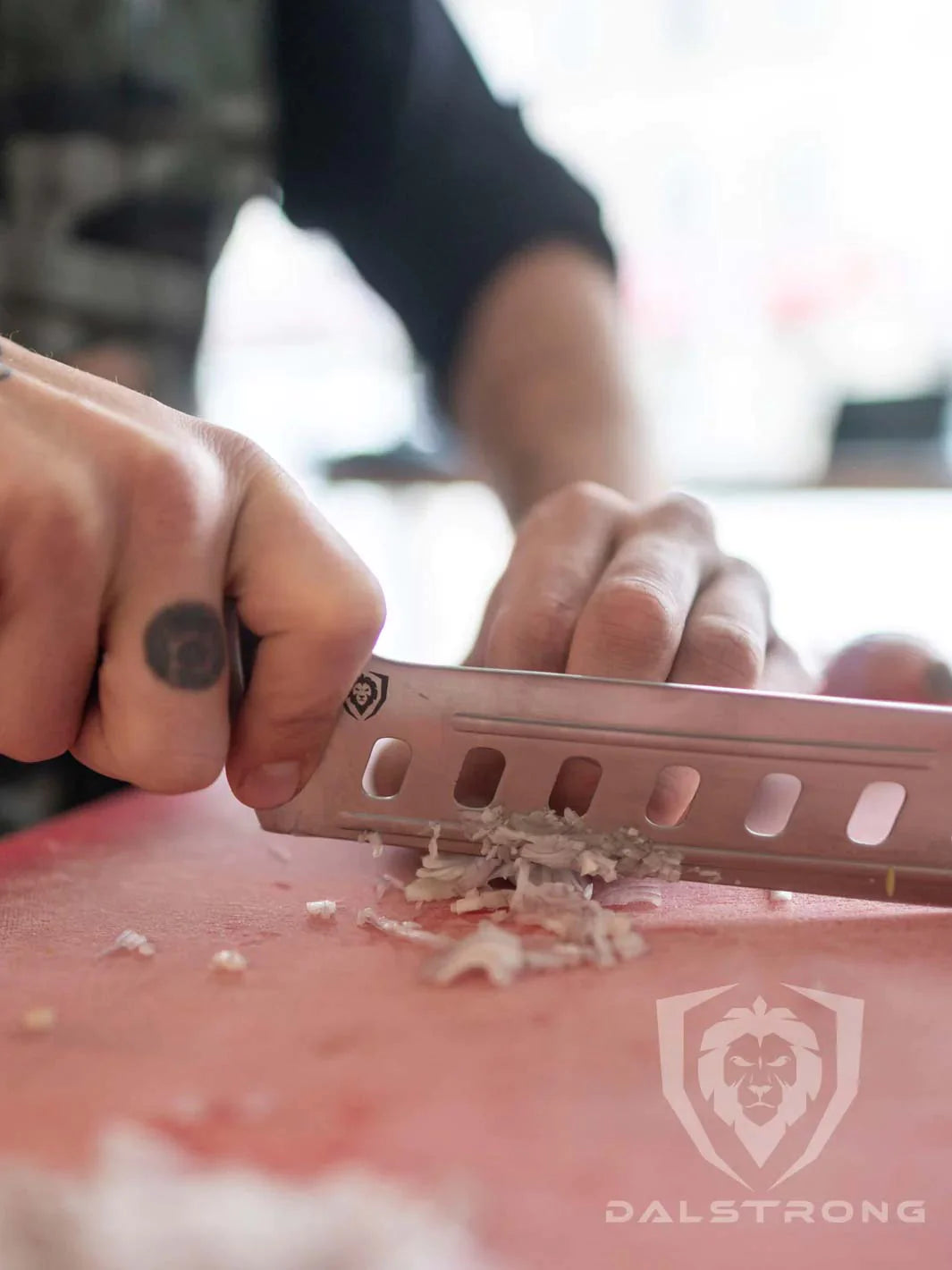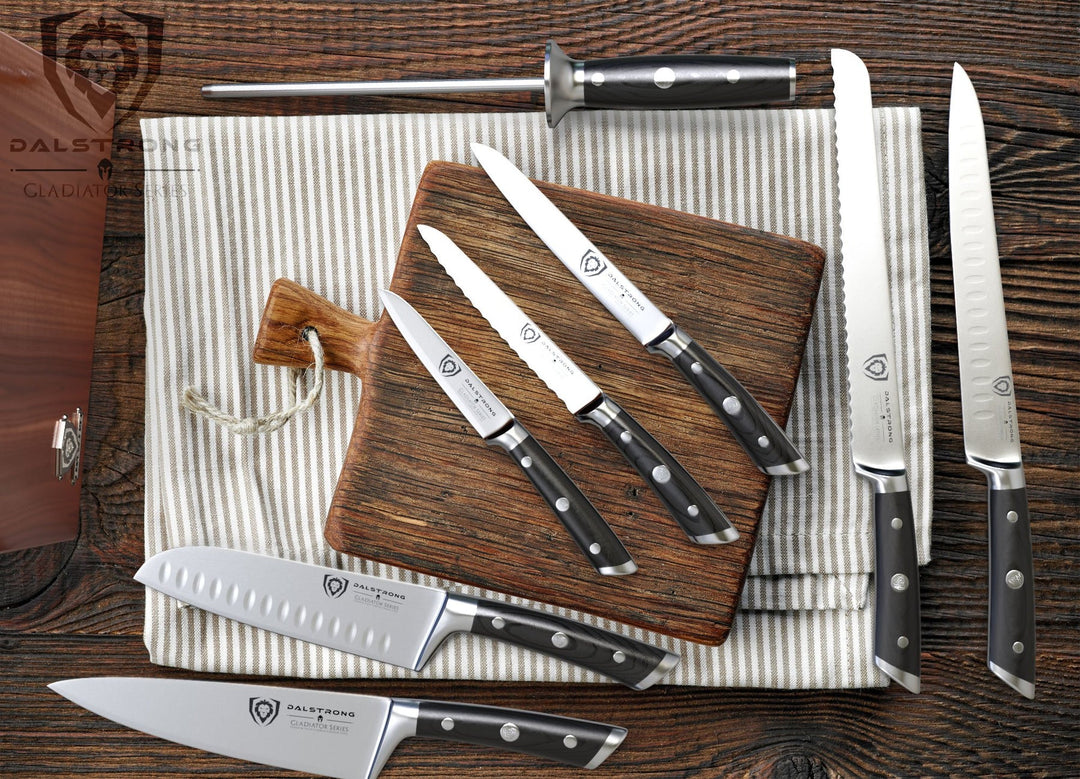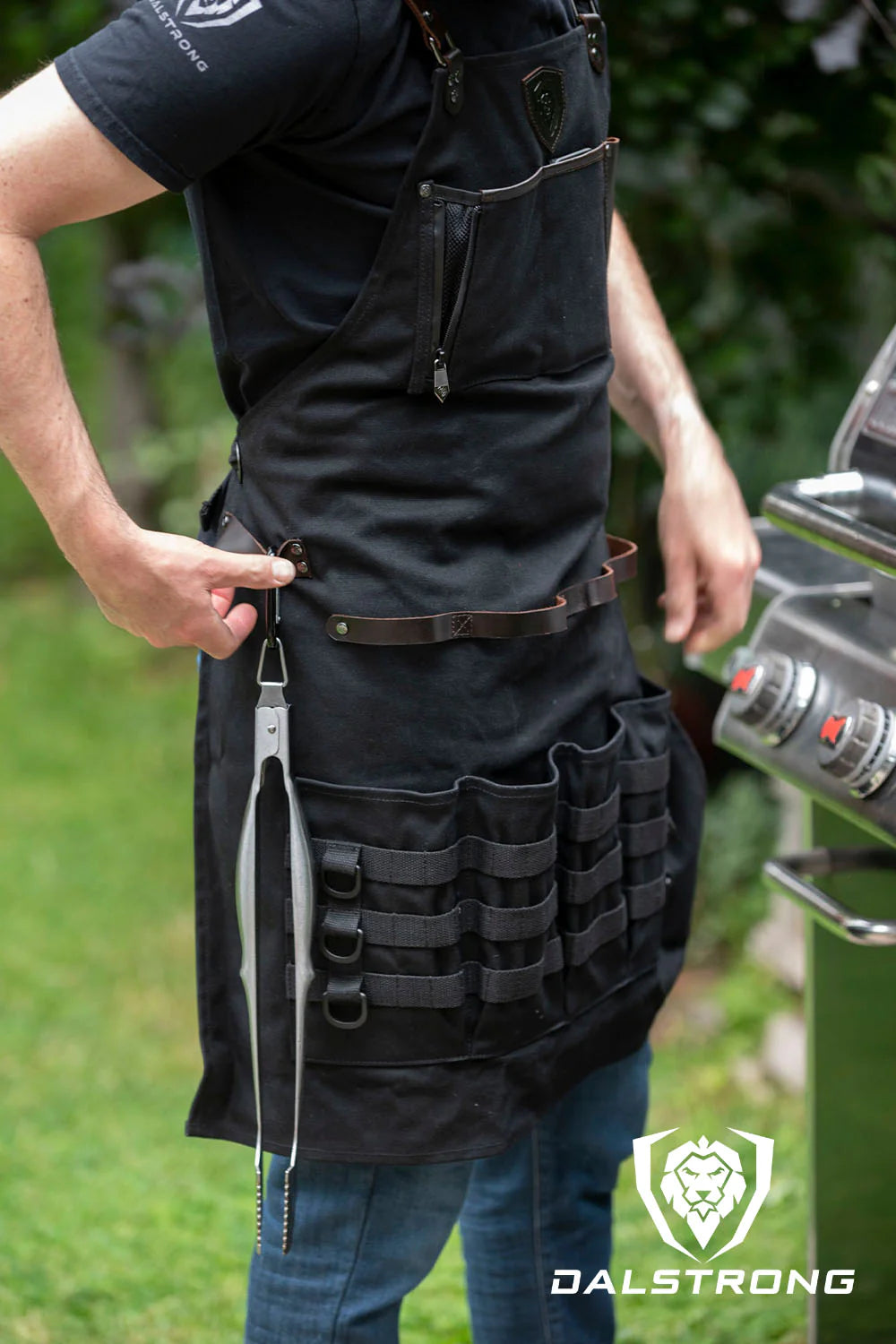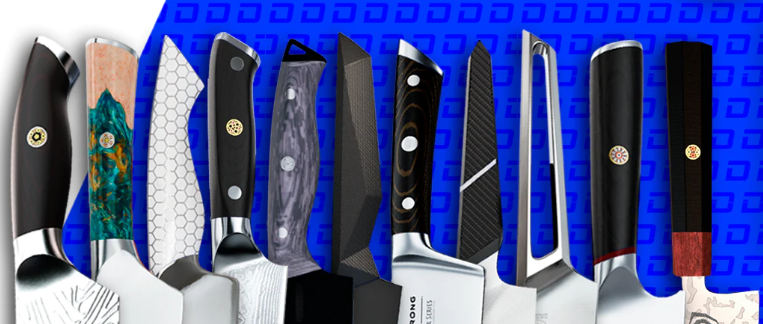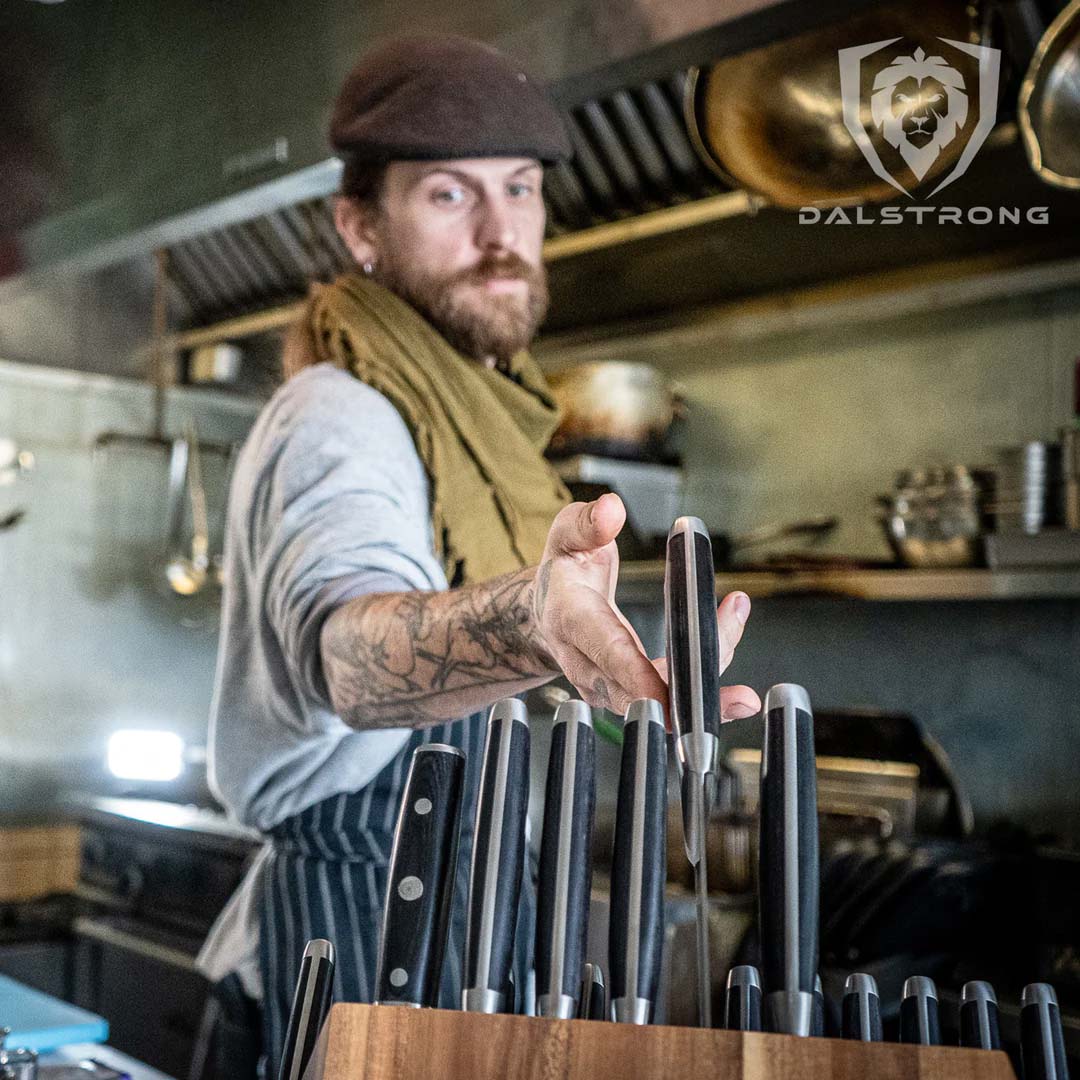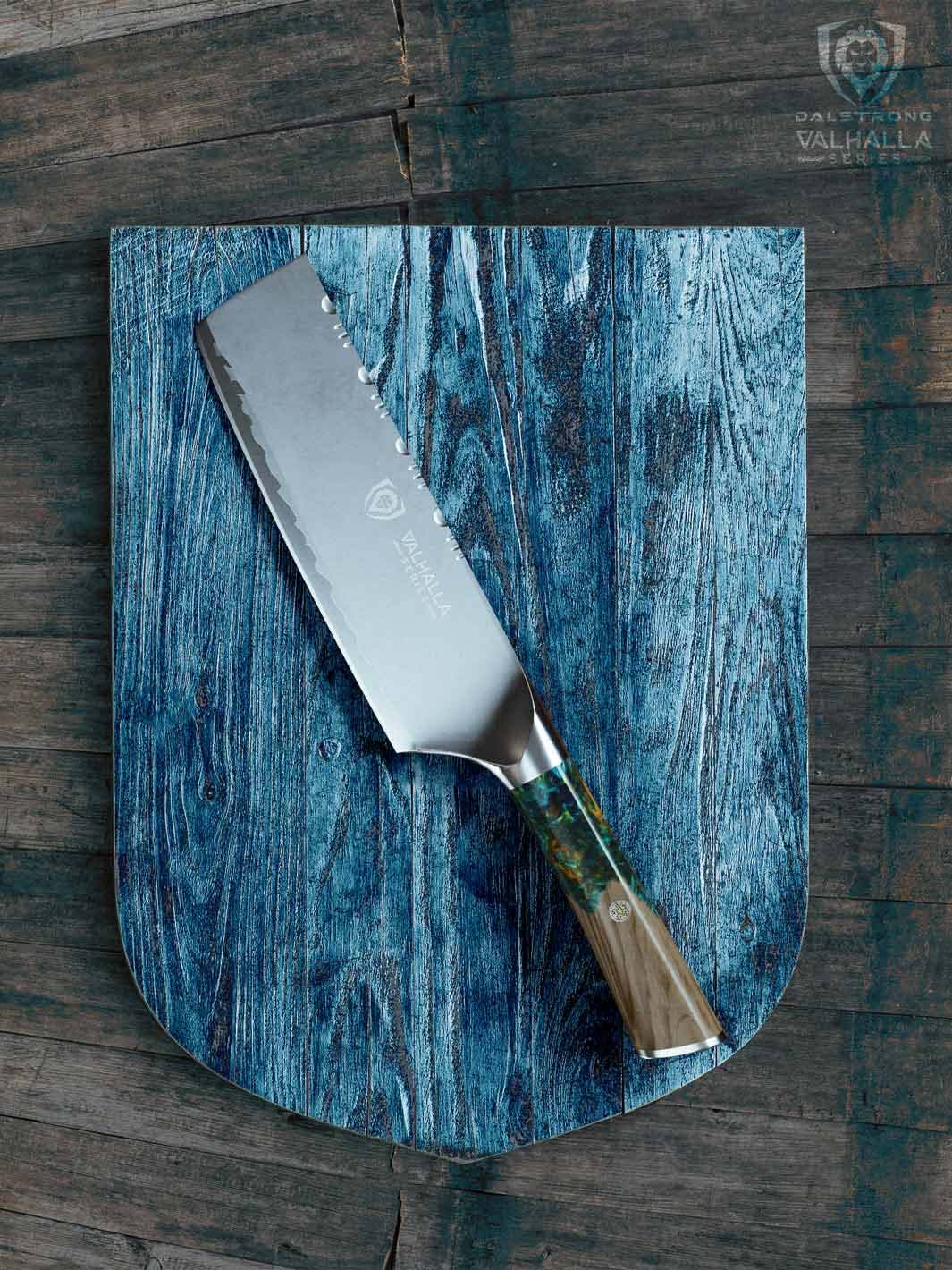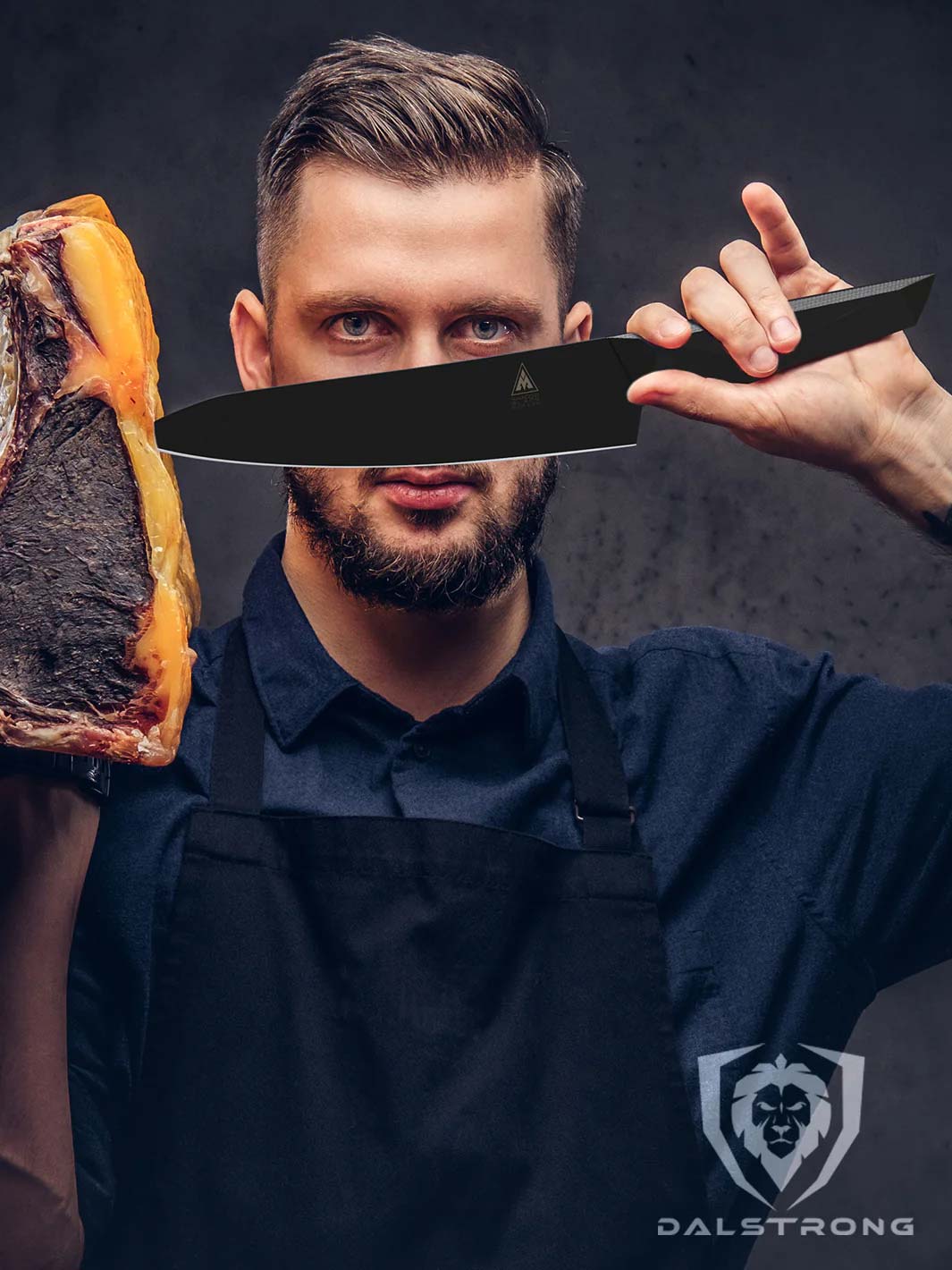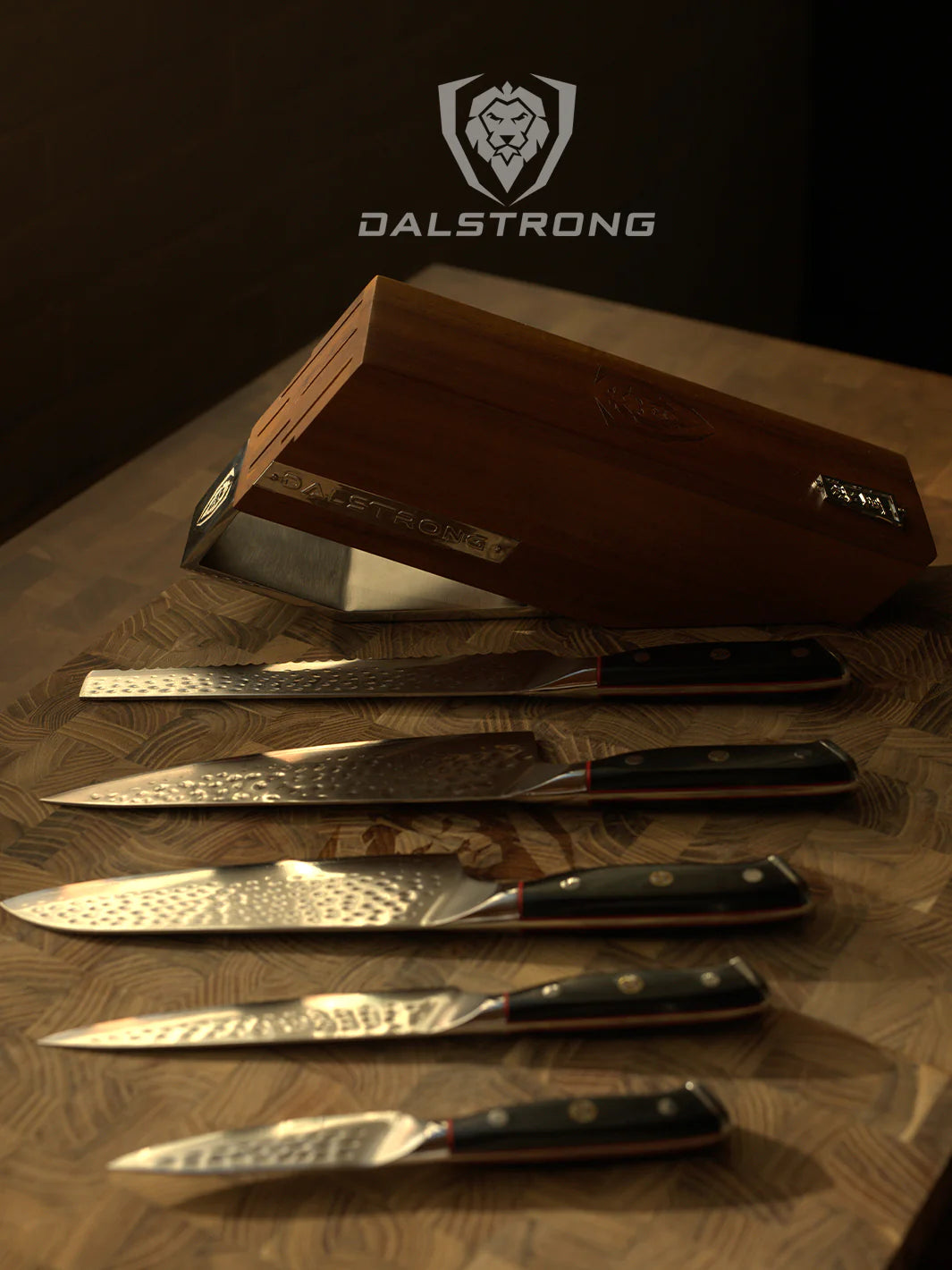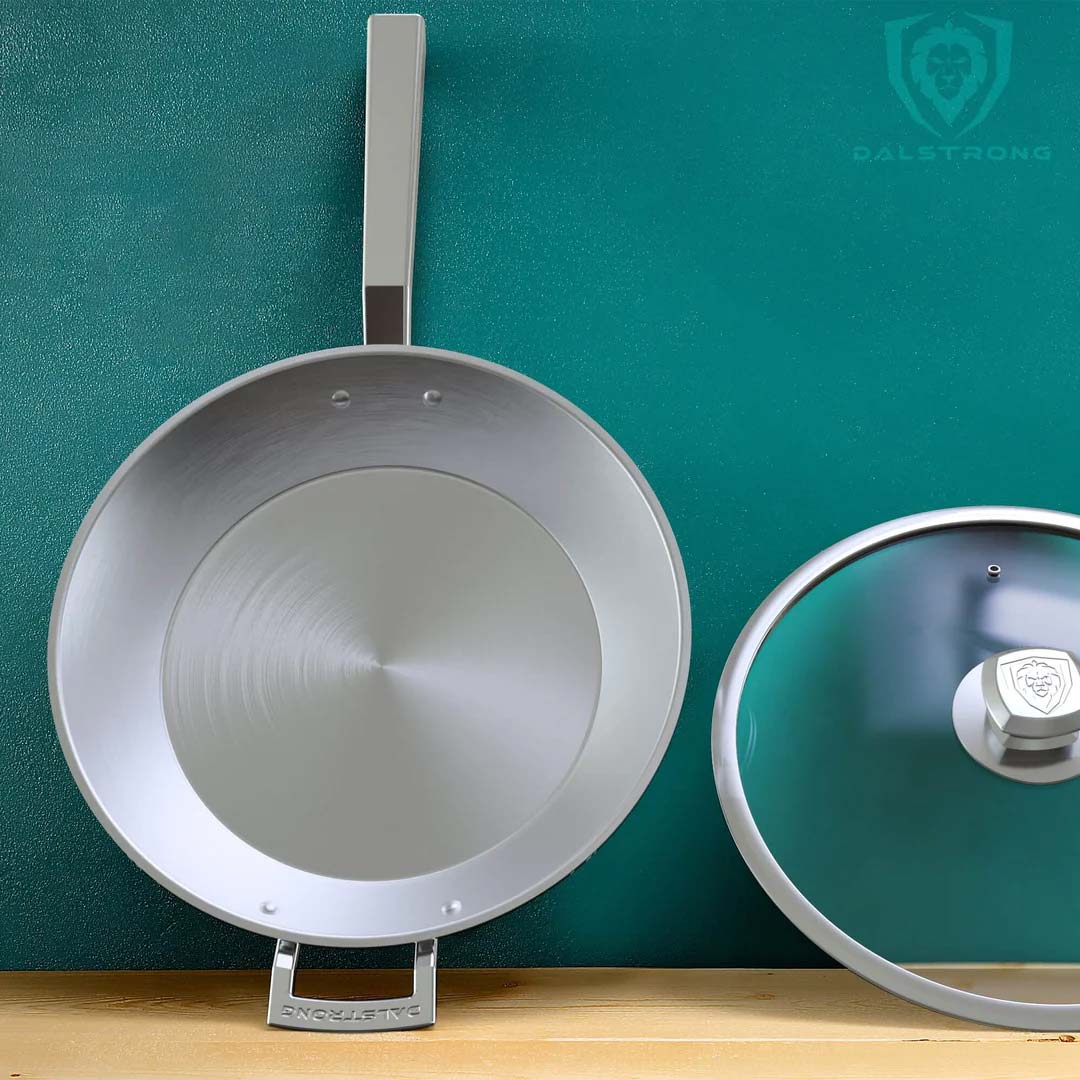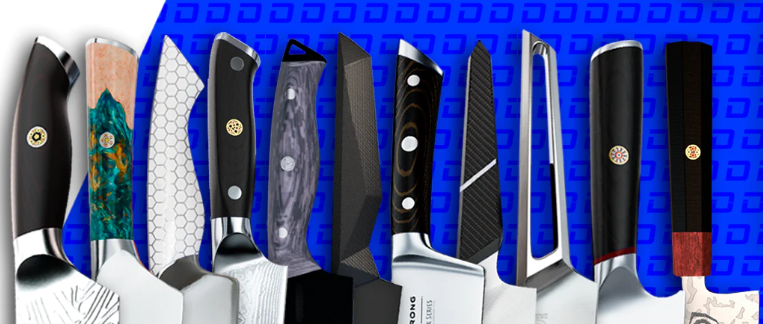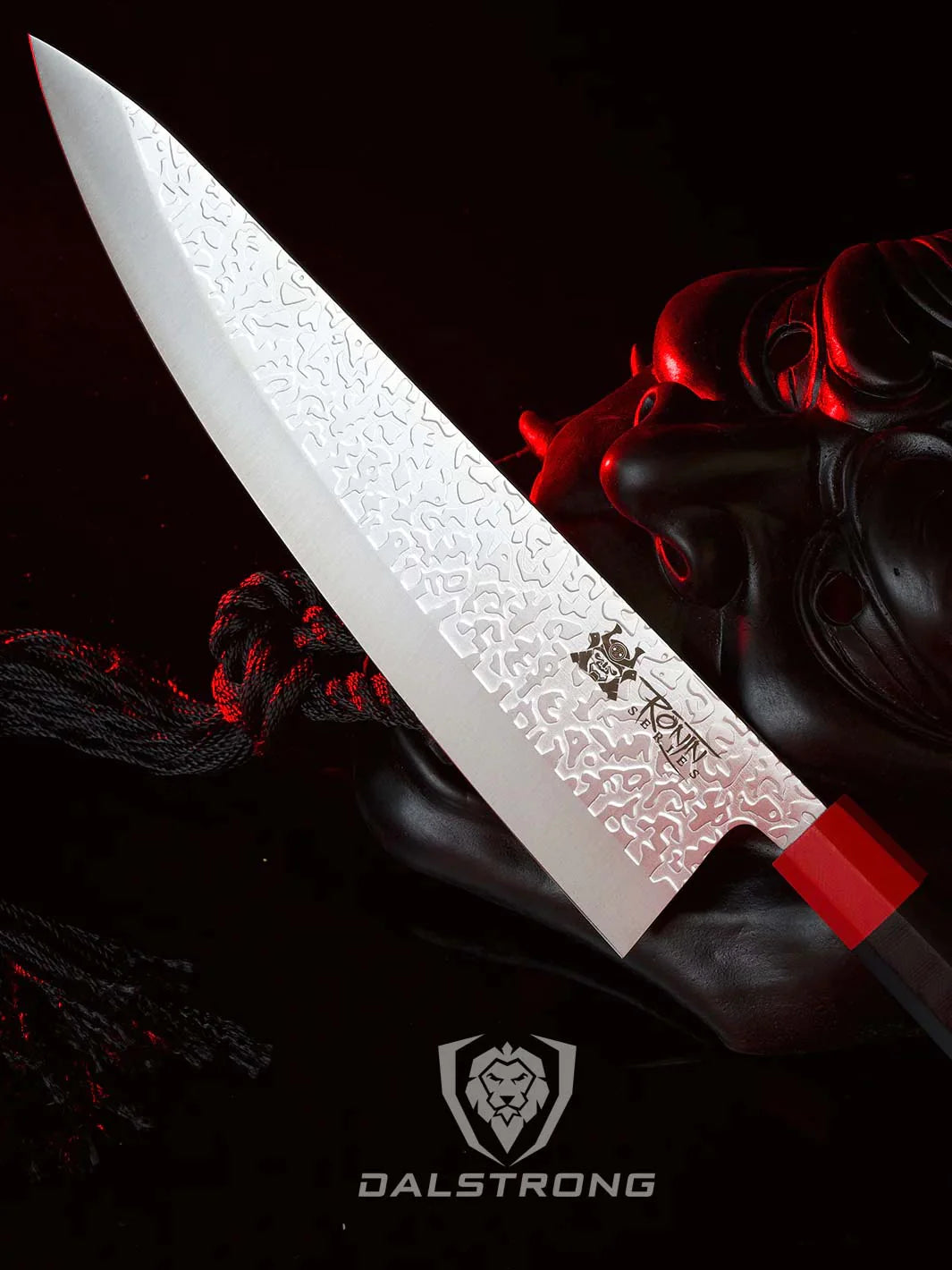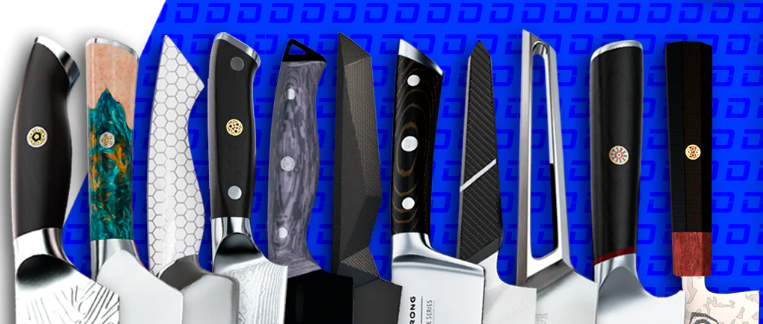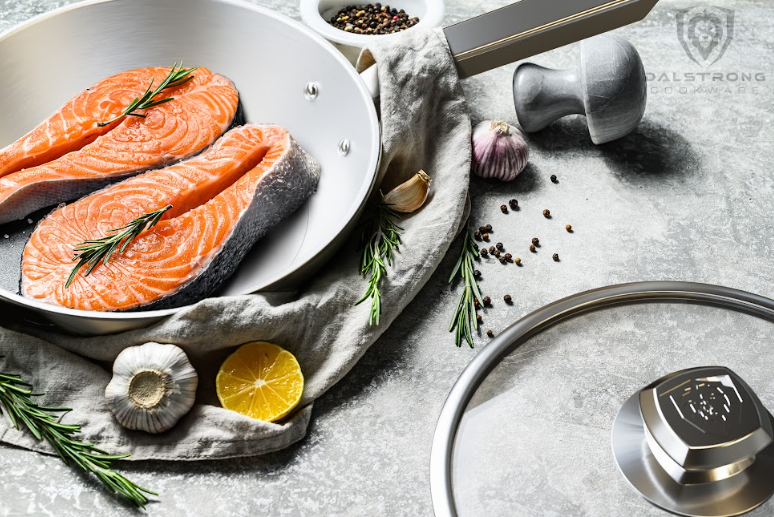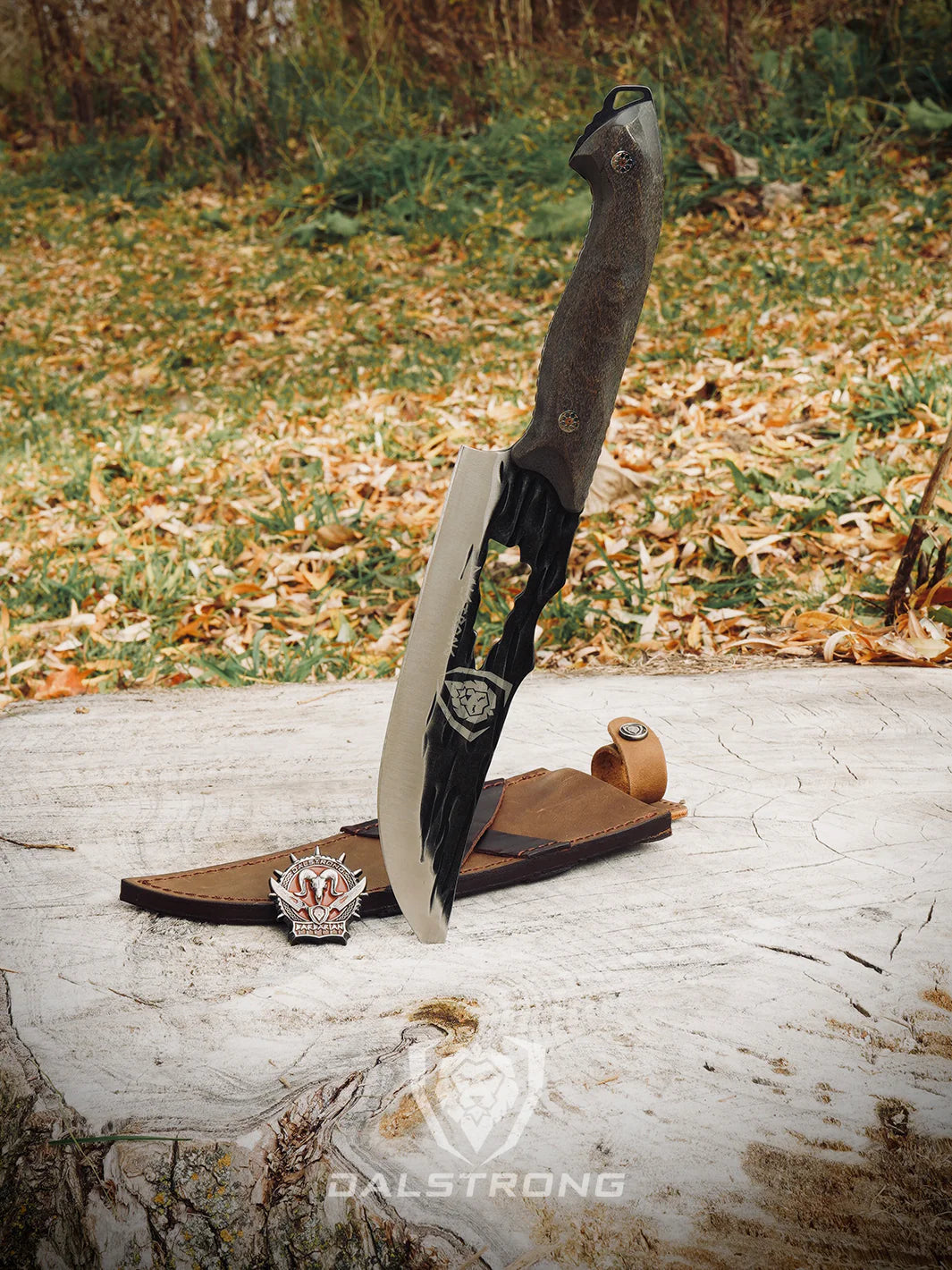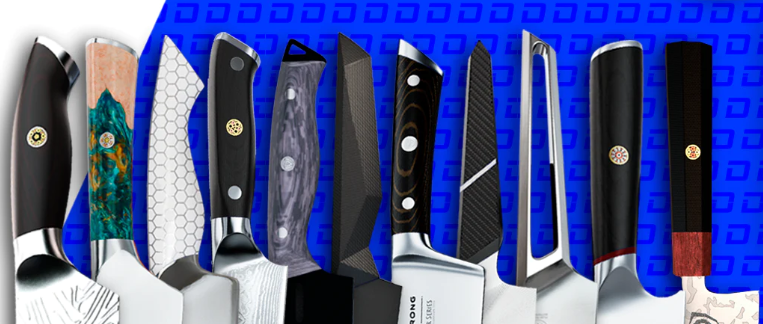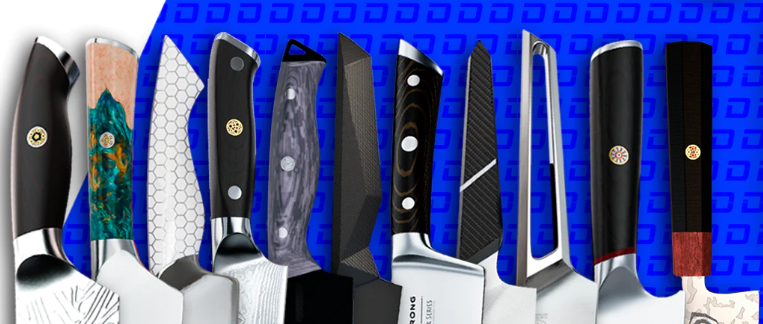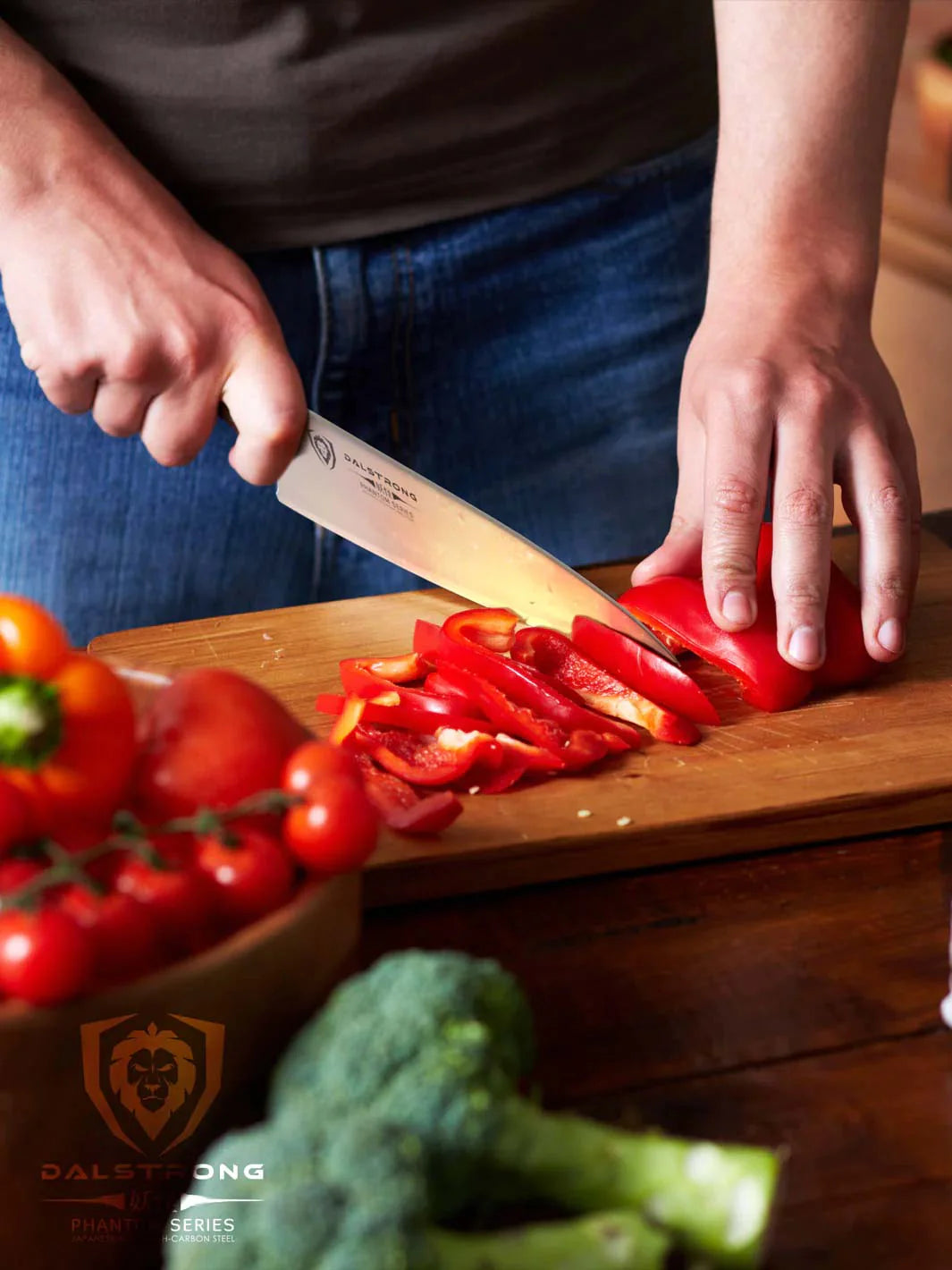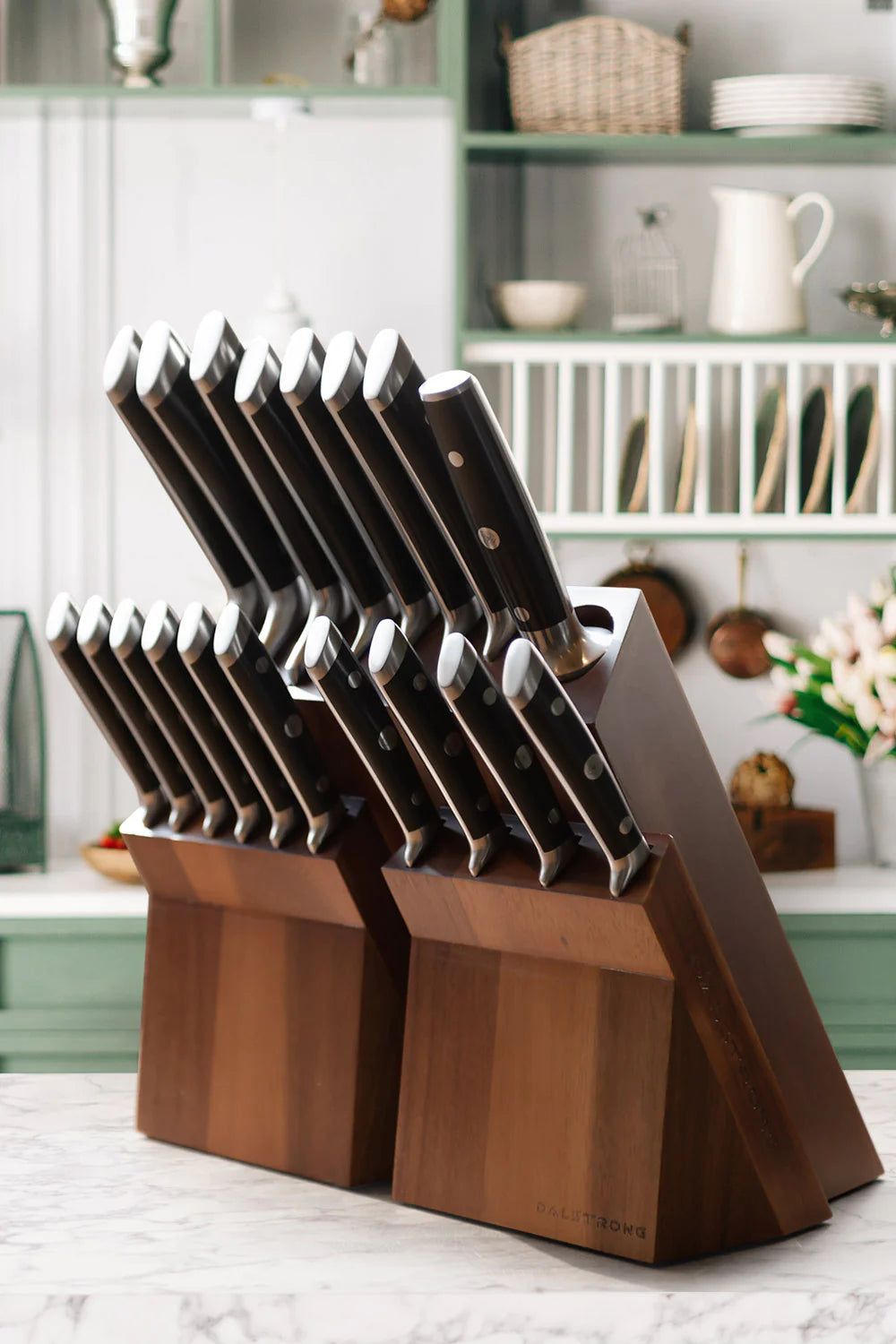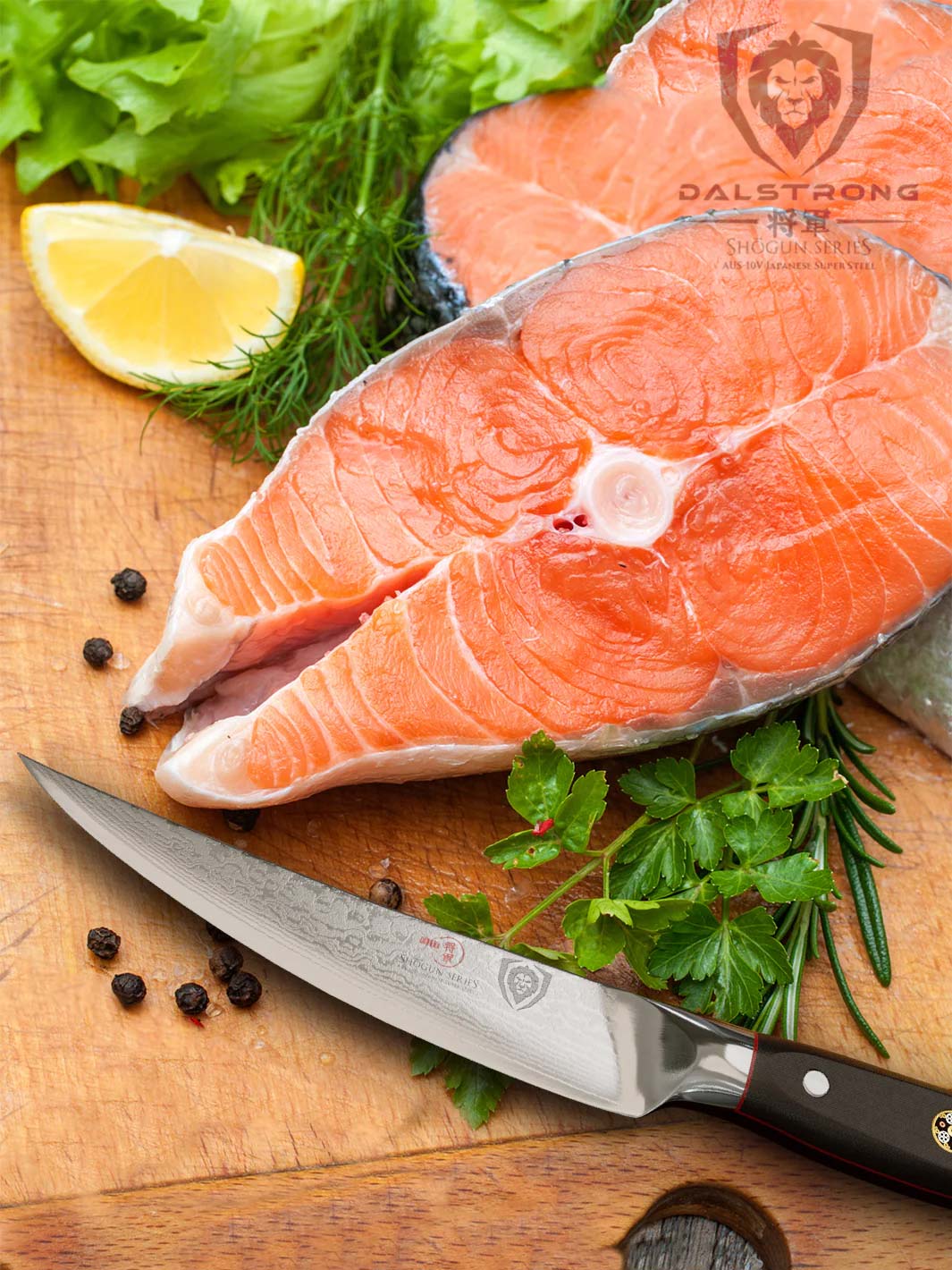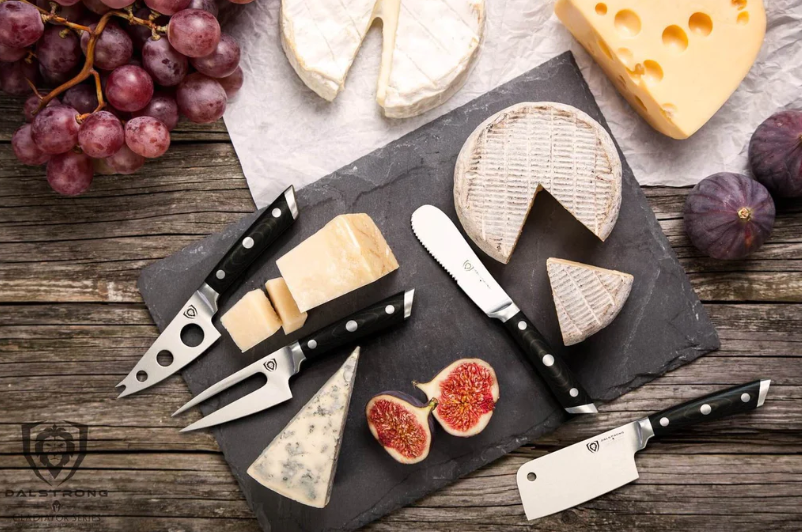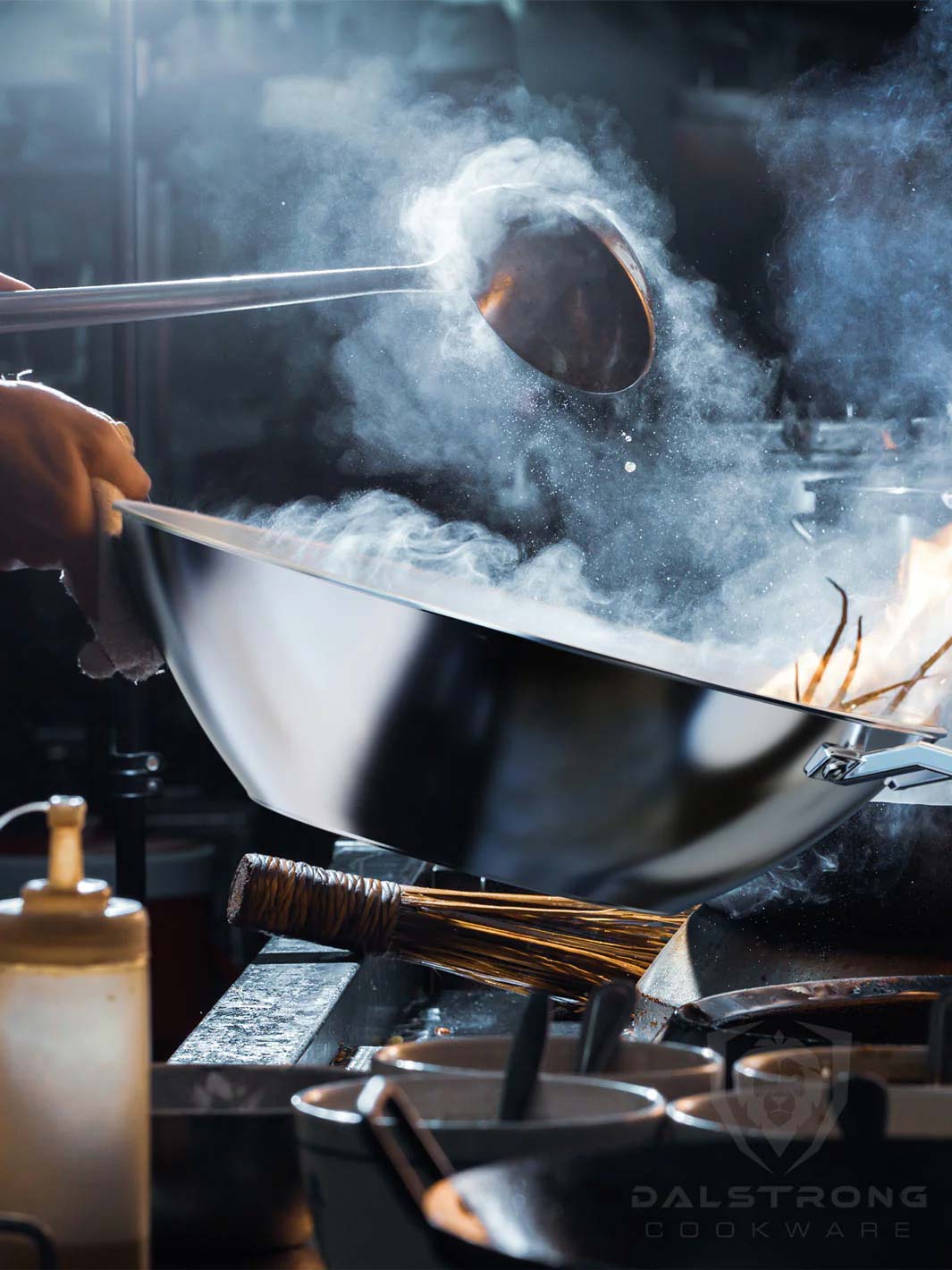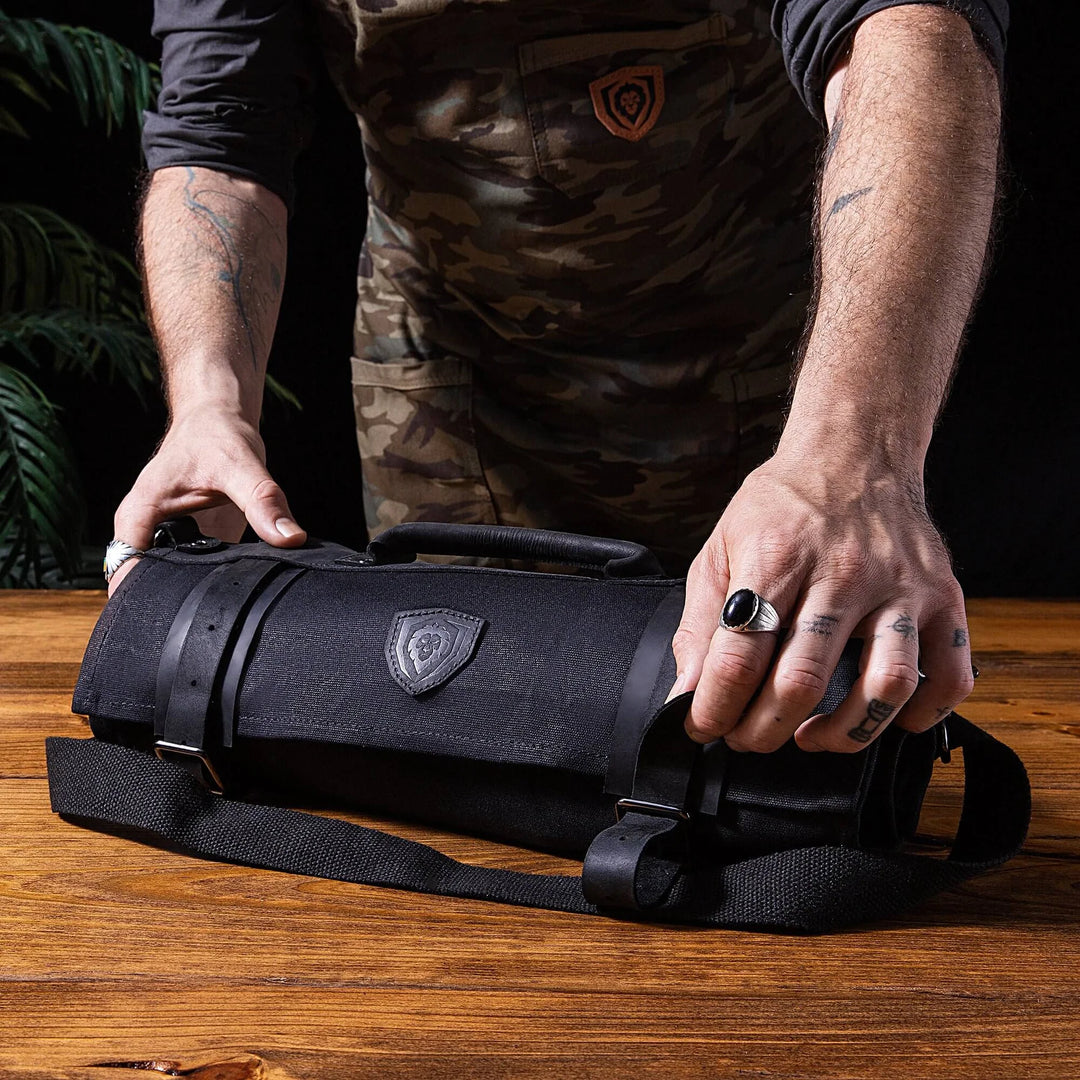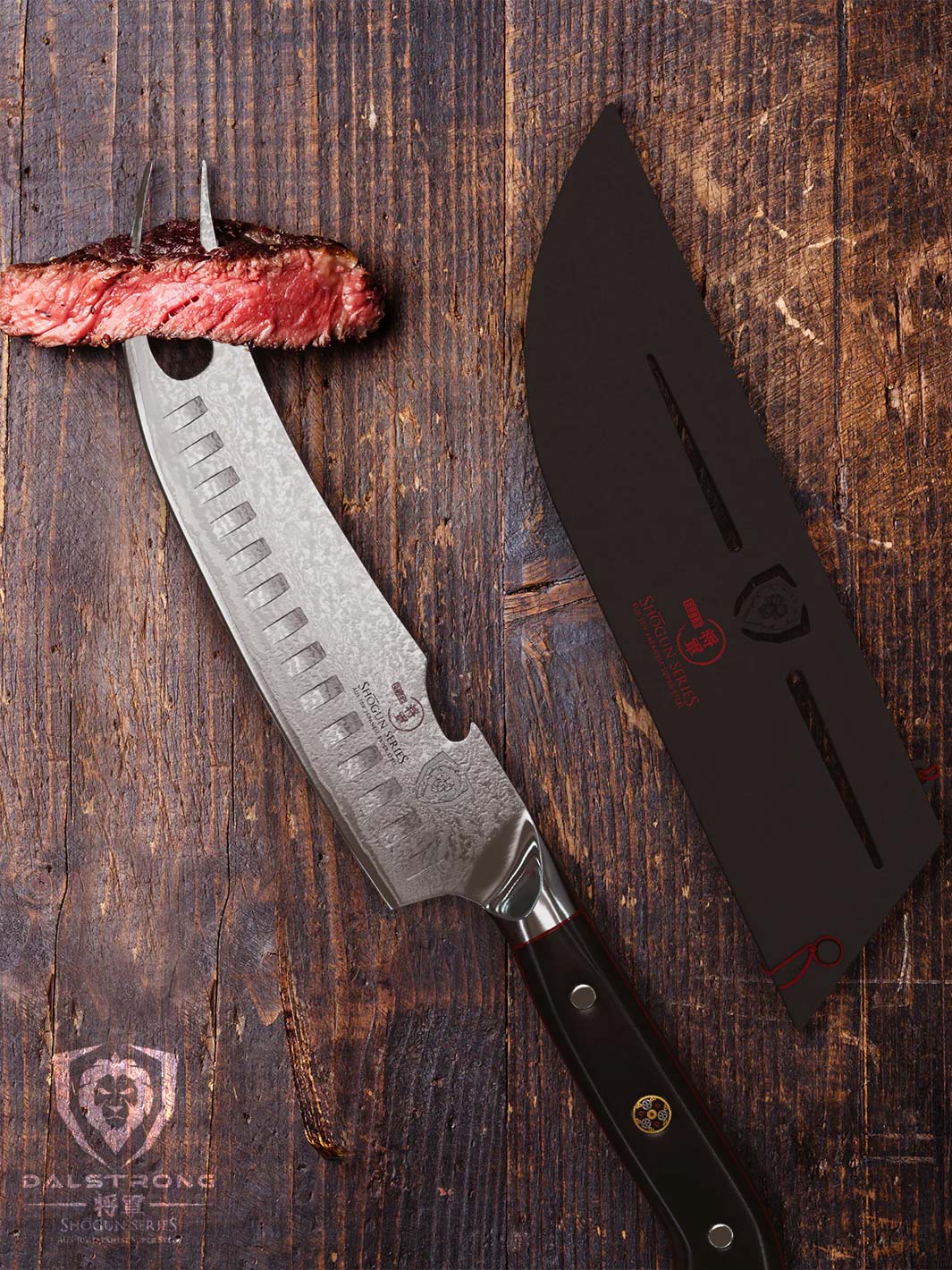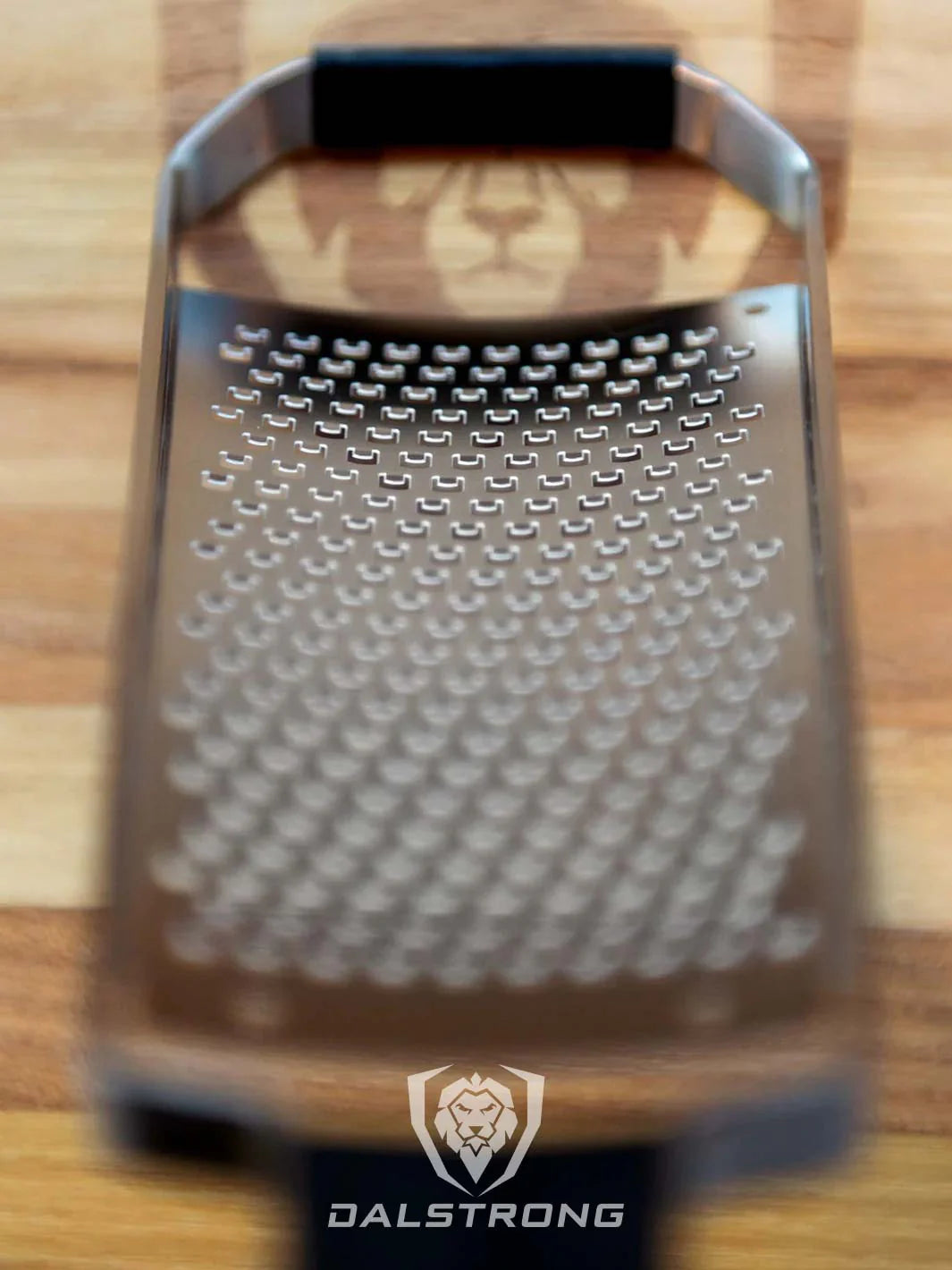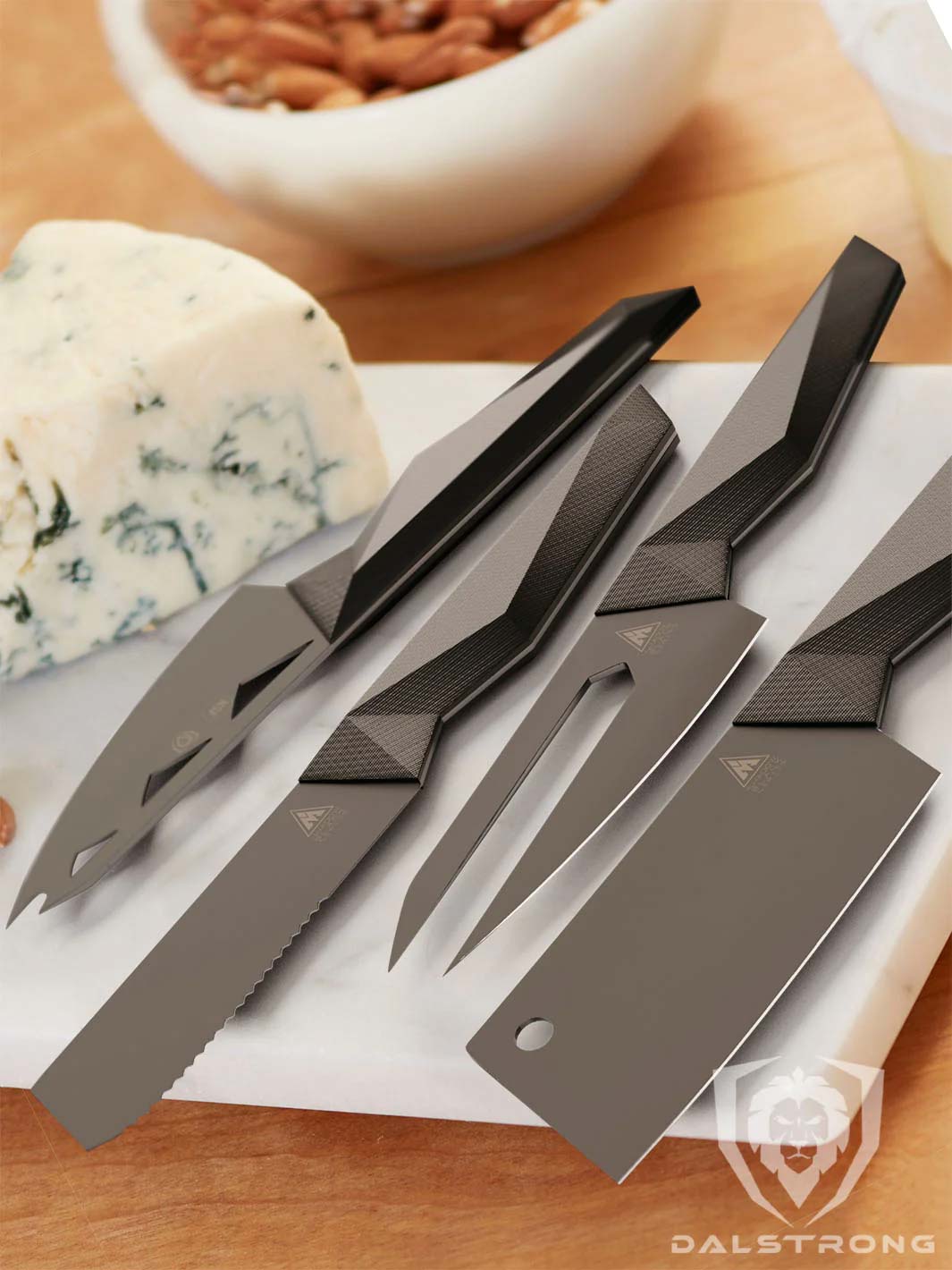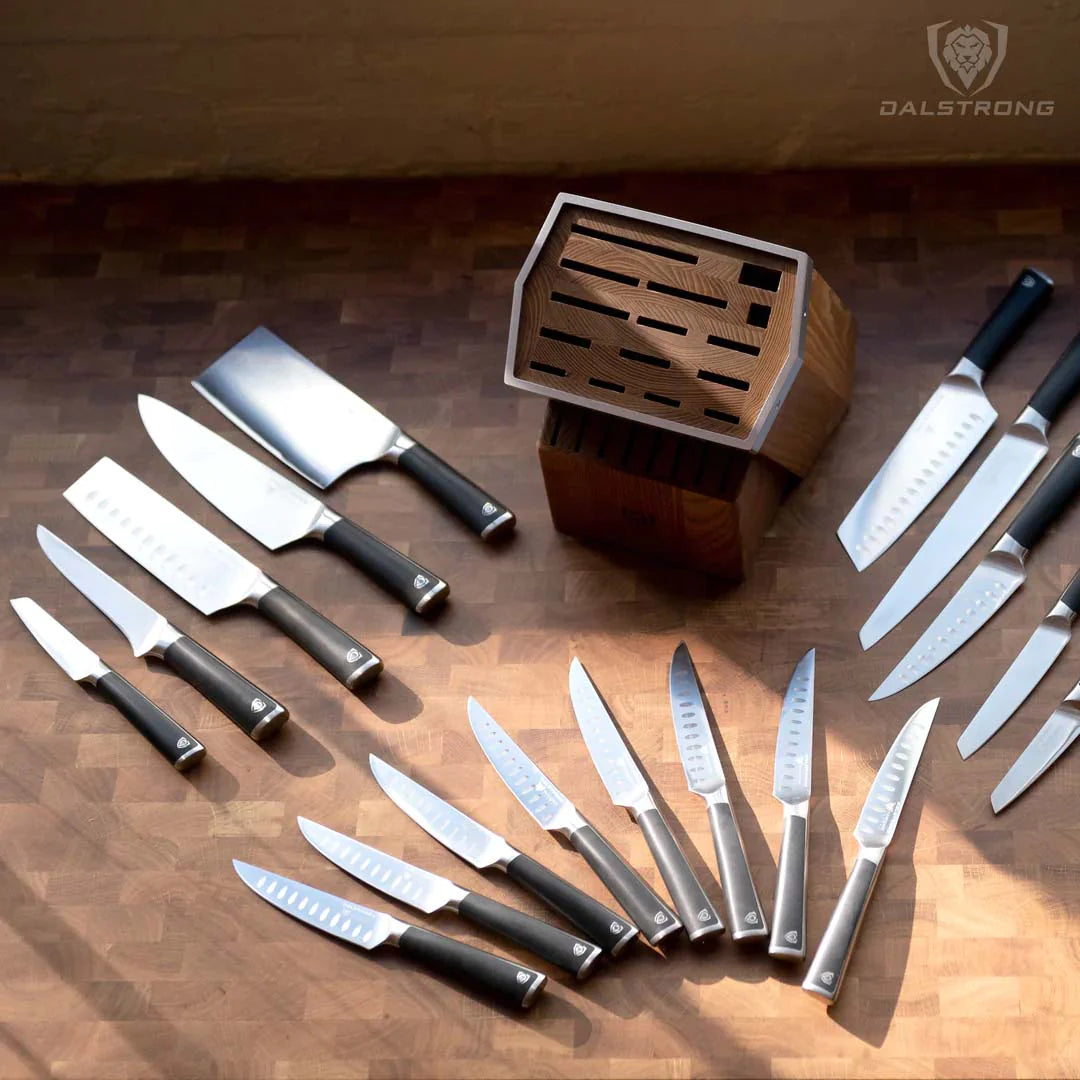In-Depth Guide to Owning a Meat Knife in 2025
 Bull Nose Butcher Knife 10" | Delta Wolf Series
Bull Nose Butcher Knife 10" | Delta Wolf Series
In-Depth Guide to Owning a Meat Knife in 2024
Let’s dive right into the variety of meat knives we offer at Dalstrong. Meet me at the end of this article, and I'll answer all your questions about everything from a kitchen knife to a boning knife.
1. What Is A Meat Knife?
I knew that I needed a meat knife in my house when I used a fruit knife to fillet salmon. Many paramedics and bandages later, I purchased one of Dalstrong’s butcher’s knives. But why is it essential to invest in a meat knife for slicing and carving meat instead of a simple utility or paring knife?
The purpose of a meat knife or a boning knife is to break down tough muscle fibers in a piece of meat by carving, cutting, deboning, and disjointing it. A versatile meat knife is also great for dicing, slicing, and chopping herbs and vegetables. You might know it better as a butcher knife or a boning knife.
A butcher knife or a boning knife can tackle stubborn beef, pork, or lamb cuts without destroying or tearing them apart. If you’re particular about cutting, slicing, and carving uniform slices of meat or fish, this is an excellent purchase since it is available in a stiff, curved, flexible, or straight design.
However, a butcher knife isn’t one-size-fits-all like a kitchen knife. There are different knives in this category. While some are great for slicing fish, others are ideal for cutting, slicing, and carving meat.
2. Different Types Of Meat Knives
Meat knives and cleavers are different from a standard kitchen knife and are our best-sellers at Dalstrong for cutting and carving meat, and rightfully so. We offer cookware, aprons, and slicing knives made with premium-grade materials so you can narrow down some of the best butcher knives for cutting, slicing, and carving raw meat.
A carving knife is an essential tool for your kitchen, whether or not you’re a pitmaster. If you’re big on family lunches or roasts, a carving knife will come in handy. It has less surface area than other knives, helping in cutting and carving your roasts and meats in a much simpler way. It is also an excellent alternative to a bread knife since a slicing and carving knife can also take on thick loaves of bread.
A boning knife is another example of an efficient butcher knife. It is best to separate the flesh from bones in meat or fish by cutting it open before carving it, and a boning knife does precisely that. A boning knife is best for trimming and slicing meat according to your preference, especially if it's made of premium quality and has a sharp blade. It can be used for cutting and chopping vegetables, too.
Breaking Knife
A breaking knife breaks down the carcass by cutting it with the help of its long and curved blade. In addition to that, it allows you to conveniently cut through the smallest of fish bones, tough skin, and cartilage. Generally, you would use a breaking knife on your carcass before grabbing a butcher knife to produce large cuts or skin the meat.
A meat cleaver has a large and broad blade to help you in the kitchen when carving large cuts of meat or cutting cartilage. While a cleaver may look intimidating compared to other butcher knives, it is much lighter in weight and thinner in its appearance, too.
It’s crucial to know the importance of a steak knife on your dinner table if you don’t want to end up like me – mishaps, bandages, and whatnot. When picking one, remember that a good steak knife would have tiny serrations along its curved blade to retain the moisture and flavor in your meat without squeezing out any of it but by also slicing and cutting it neatly.
The most crucial component of a chef's knife is the control an ergonomic grip it offers you. The perfect chef knife would pose no inconvenience when chopping, slicing, or cutting. A chef knife is used for dicing vegetables, chopping up nuts, slicing herbs, and even disjointing, carving, and cutting tough cuts. A chef knife is necessary for every household, and now you know why that is.
A slicing knife is one of the longest knives in the culinary world. It is slim and long in appearance. The narrow width of the blade creates less drag and cuts through the meat in a cleaner way by cutting, slicing, and carving uniform slices. A slicing knife is a necessary tool in every house, undoubtedly.
Designed with a medium or short blade like a chef knife, this knife rests easily on kitchen counters or a cutting board while you cook. While often confused for a paring knife, a utility knife is more versatile than other kitchen knives. A utility knife is perfect for cutting and slicing meat.
Meat cutting doesn't have to be complicated. Japanese knives have an excellent reputation for being the sharpest and sleekest looking knives out there. Santoku is Japanese means ‘three uses’. The Santoku knife has three wonderful traits: drop point tip, sharp blade, and straight edge. A Santoku knife would be the perfect purchase for cutting meat or cartilage and even slicing sashimi.
3. What To Look For In A Butcher Knife Or A Cleaver Knife
Shogun Series ELITE Butcher's Breaking Cimitar Knife 10"
Once you’ve determined your preferred blade length, let’s go over a few essential elements in a meat knife or meat cleavers, such as edge, tang, and material. These traits will help you cut precise and thin slices of raw or cooked meat and fish.
Certain foods require a particular type of edge. For example, if you’re looking to get a clean cut on butternut squash, a straight-edge knife is ideal. If you’re cutting up and slicing a salmon for sashimi, a scalloped-edge knife is your best friend. But let’s dive deeper into this.
Straight Edge
A chef’s knife, kitchen knife, or meat cleaver is made with a straight edge, which helps create less drag and makes cutting meat or fish much simpler. Knives with a straight edge can cut and slice meat in one swift motion. This applies to a utility, paring, and kitchen knife with a straight edge, too.
Serrated Edge
A knife with a serrated edge, such as some slicing knives, has grooves and ridges along the blade that are whetted to cut more challenging meats such as roasts or hams. They also help maintain the shape of foods like briskets and ribs by cutting them without tearing them apart entirely.
Scalloped Edge
A scalloped edge blade is found on Japanese knives, like the Santoku, as it helps cut and sticky raw meat like sashimi or sushi. It is also known as a ‘Granton blade’ after the very first manufacturer of the scalloped edge blade.
Hollow Ground Edge
This knife tapers down from the middle of the blade to create an extremely sharp and refined edge. This edge makes it one of the best butcher knives if you’re looking for something that decreases drag. A Nakiri knife is a perfect example of what a hollow ground-edged knife looks like.
Full Tang VS Half or Sub Tang
When you look at the anatomy of a cleaver or butcher knife, you will notice a portion of the blade extending into the knife handle. That is what we call the tang.
Full Tang
A butcher knife with full tang would have a piece of the blade extending to the butt of the knife. This gives it strength, improves its sturdiness, and tremendously enhances the grip. It can also withstand pressure from stubborn cuts of lamb or pork and vegetables such as carrots and melons.
Half or Sub Tang
Since meat cleavers are lighter and thinner, it makes sense to have a half tang. If a meat cleaver has a full tang, it will become challenging to hold, decreasing the blow to the stubborn cuts of meat. It can also make you prone to accidents and other mishaps.
So, if you prefer a butcher knife to tackle large cuts of meat, then opt for one with a full tang. However, if you work better with a meat cleaver, the half tang is ideal.
Knife Blade Material
Knowing what material works best for a durable, sturdy, safe butcher knife is crucial. And, if you’re what I call a ‘Dalstrong pro’ in the kitchen, let’s find you the best carving knife, meat cleaver, or one of our many butcher knives that work for you.
Carbon Steel Blades
Carbon steel is made with a combination of carbon and iron. In its raw form, it lacks chromium, which is then added to resist and repel stains. If you have a close look, you will notice that most butcher knives or meat cleavers are made with carbon steel. This is because carbon steel as a material is highly durable and sturdy. If maintained well, such blades can retain sharp edges.
Stainless Steel Blades
A stainless steel blade is arguably the most famous butcher knife or meat cleaver material. It comes to the table (quite literally, might I add) with its highly durable nature as it resists corrosion and rust. The only downside of stainless steel is that it is widely available, so you could land a fake one.
However, at Dalstrong, our meat knives and cleavers at made with premium quality stainless steel. So, we’ve got your back. The stainless steel used to create your butcher knife or meat cleaver can come in a stamped or forged blade design. I prefer a forged blade since I like working with a butcher knife. But, here are a few things you should know about them.
Stamped Blade
A stamped knife is made from a single sheet of stainless steel. Although it is pretty easy to create stamped knives, they are harder to sharpen as they undergo a cheaper manufacturing process, affecting their durability. Most meat cleavers have a stamped blade made with stainless steel since they are much lighter in weight.
Forged Blade
A forged knife is made from a large piece of metal. It is constructed by hammering a stainless steel block under a powerful press. When this process takes place, the blade becomes exceptionally sharp and robust. So, you wouldn’t need to grab a whetstone as often. A slicing knife is usually made with a forged blade.
4. How To Hold And Cut With A Meat Knife
Regardless of the kind of meat knife you prefer – one of the many butcher knives or a cleaver knife, here are 3 steps to improve your slicing skills dramatically.
Step 1
Rest your index finger along the blade, just ahead of the handle. Your middle, ring, and pinkie finger should be holding the majority of the handle.
Step 2
You should tuck your thumb to the opposite side of the blade. Remember to curl your fingertips as they could come under the knife, hurting you in the process.
Step 3
The thumb rule (no pun intended!) of knife safety is always to cut away from the body. So, your forearm should be slightly extended outwards to create distance from yourself to the cutting board. The same applies when you’re sharpening your knives.
5. The Best Butcher Knives And Meat Cleavers At Dalstrong
Now that we’ve established the different types of meat and kitchen knives, it’s time to get into the specifics. We’ll dive into the three core components here – Comfort, control, and agility.
I can never compromise on agility. An ergonomic handle that lets you slice, cut, and carve in one swift motion is a game-changer. Read on if you want to find the best carving knife, just like I did for myself!
1. Cleaver & Butcher Knife 12.5" Devastator | Gladiator Series
There’s nothing we love more than a hybrid that kills two birds with one stone, just like this cleaver and butcher knife made with high-carbon steel. Coming through with its tremendous 12.5” inch blade length, we call it the ‘devastator’ for obvious reasons.
This knife has a 4mm thick blade made with stainless steel that weighs 1.5 lbs. to create havoc in the kitchen. Thanks to its high carbon stainless steel, the ‘devastator’ are designed to offer maximum durability.
Pros:
- It is made with German ThyssenKrupp high-carbon steel and hardened at 56+ Rockwell.
- The tall, wide blade gives knuckle clearance with its full tang while also cleaning efficiently.
- Polished high carbon stainless steel spine with a pinch grip, triple-riveted and impervious to heat, cold, and moisture.
Cons:
- If you’re not a seasoned chef or home cook, the build of this cleaver and butcher knife could be intimidating for you.
- If you love working with knives made purely of stainless steel, I suggest checking out our Shogun series.
2. Bull Nose Butcher Knife 10" Shogun Series
This bad boy is painstakingly sharpened to a staggering 8-10º degree on each side, giving you a polished edge. The blade is forged with a single piece of ultra-premium high-carbon AUS-10V steel with 67-alternating layers of SUS410 Damascus cladding.
The tapered blade provides enhanced finger protection and has a comfortable pinch grip, which is crucial for a good knife.
Pros:
- Full tang and a triple-riveted blade add resilience to this knife.
- Rust and corrosion-resistant, thanks to its high-carbon build.
- The cryogenic tempering increases the high-carbon steel’s structure, making it harder, flexible, and more robust.
Cons:
- If you prefer a knife with high carbon stainless steel make or pure stainless steel instead of the Damascus kind, this may not be the one for you.
- While this knife is an excellent purchase to enhance meat cutting skills, it may be out of budget for some.
3. Butcher & Breaking Scimitar Knife 8" Gladiator Series
This butcher and breaking scimitar knife is the perfect knife for those of us that prefer a shorter blade. While this knife has an 8” inch blade, it is merciless when butchering or breaking down a carcass. The rock-hollow divots along the blade help break down the meat.
Pros:
- Made with high-carbon ThyssenKrupp German steel, this scimitar knife ensures an ultra-sharp edge with wear and stain resistance.
- Paving the way for you with its ergonomic and ambidextrous handle, this butcher knife has maximum maneuverability.
- Highly budget-friendly to both the novice and a seasoned chef.
Cons:
- If you’re looking for a longer and broader blade from the Gladiator series, I suggest you use butcher knives with a 10” inch length.
- If you’re a professional chef, I suggest a larger knife for utmost functionality on the higher-end of price.
4. Bull Nose Butcher Knife 10" Shadow Black Series
If you read our recommendations often, you know that we would never miss out on the Shadow Black Series. This series is packed with so much personality!
Meat cutting has never been simpler by decreasing hand fatigue and offering functionality. The G10 resin handle has a tapered bolster, ensuring a comfortable pinch grip and precision.
Pros:
- Muscular build with an ergonomic handle, helping you butcher your meat with ease.
- Non-reflective titanium-nitride coating to ensure durability while staying corrosion-resistant.
Cons:
- Sharpening this butcher knife could be a little difficult because of its titanium-nitride coating.
- If you prefer a butcher knife with half tang, I suggest looking at other series such as Gladiator and Shogun.
5. Butcher & Breaking Knife 10" Phantom Series
This butcher and breaking knife set is a game-changer. Its 10” inch blade is the right weapon before cutting or marinating it. This knife set was designed to slice and break through the flesh of seafood like lobsters and fish while trimming and cutting excess fat from pork, beef, or lamb. It is also perfect for boning.
Pros:
- This knife set is made with premium quality Japanese AUS-8 stainless steel hardened at 58+ Rockwell.
- It is ruthlessly sharp and has a scalpel-like blade that is painstakingly angled at 13-15º degrees, helping you achieve precision.
- This knife set is low in maintenance and cleans super easily, thanks to its stainless steel make.
Cons:
- If you prefer a high-carbon or carbon-steel handle, I suggest looking at our Shogun series, as this one may not be the right fit for you.
- It could be a little too much blade for the novice.
6. Myths, Tips, and Tricks About The Meat Knife
Okay, at some point, we’ve all believed myths about knives. Specifically, meat knives. Let’s discuss.
Myths
“A dull knife is safer than a sharp one.”
There is nothing more dangerous than a knife that hasn’t met the whetstone. The durability of your blade depends on the way you maintain it, not just its material.
“Stainless steel knives won’t rust or stain.”
While stainless steel is an excellent choice of material for your butcher knives or meat cleavers, they do rust and stain. They rust more than high carbon stainless steel or carbon steel.
“Harder steel means better edge retention.”
If the blade on your butcher knife is too hard or brittle, it’s going to lack flexibility and edge retention.
Tips and Tricks
- Create a flat surface on your meat before cutting it! This prevents it from slipping or moving around on your cutting board.
- Honing your butcher knives every 2-4 uses is excellent practice in a large kitchen or twice a year at home.
- Cutting up meat into chunks after marinating it in sauces and marinades will create a wet environment. Rest your meat on the cutting board for a few minutes instead of slicing it right away.
7. Frequently Asked Questions
What is a meat knife called?
A meat knife has many names, including a butcher’s knife, meat cleaver, cleaver, and a slicing and carving knife.
What knife works best for cutting meat?
This is all down to personal choice. Some people prefer to work with butcher knives, whereas some choose to work with a meat cleaver or a carving knife.
What are the most common mistakes when using a butcher knife?
Not sharpening or honing your butcher knife might be the biggest mistake, followed by choosing an incorrect blade length or material.
What knife is best for cutting meat?
The best knife for cutting meat is a "butcher knife" or a "chef's knife." These knives are typically made of high-carbon stainless steel for sharpness and durability. Chef's knives have a versatile design suitable for various tasks, including slicing meat. For larger cuts like prime rib or pork butt, a "carving knife" with a curved, thin blade is preferred for precise slicing. Wooden handles provide a comfortable grip, enhancing control during meat preparation.
What is a meat slicing knife used for?
A meat slicing knife, often referred to as a "curved breaking knife," is primarily used for slicing and breaking down large cuts of meat. It features a long, curved, and narrow blade that allows for precise and controlled slicing, making it a favorite tool for butchers and professional cooks. The design, including a comfortable grip and finger guard, enhances safety and ease of use when cutting meat.
What is the meaning of meat knife?
A "meat knife" is a broad term that refers to a knife designed specifically for handling meat in the kitchen. These knives come in various types, including chef's knives, carving knives, boning knives, and slicing knives. Each type is tailored to a specific meat-related task, such as chopping, carving, deboning, or slicing meat. Meat knives are essential tools for butchers, chefs, and home cooks when preparing and serving meat dishes.
SHOP DALSTRONG MEAT KNIVES TODAY
Written by Ananya Tiwari
Ananya loves the fine things in life. When she isn’t penning down poetry or song lyrics, she spends her time cooking and creating recipes while also enjoying new cuisines.






































































































































































































